|
Hi Tony! I was researching if I could find any direct connection between Goju Ryu Karate-Do and Kobudo - and I found this video: Kanryo in this instance is written as '贤亮' - which does not quite match the Chinese ideograms used to spell the name of 'Higaonna Kanryo' (東恩納 寛量): 1) For the name of this Style of 'Kanryo' Kobudo we have the following two Chinese ideograms of: a) 贤 = (xian2) - 'Ken' in Japanese b) 亮 = (liang4) - 'Ryo' in Japanese This would suggest the name of this Kobudo (贤亮) should read 'Kenryo' (Virtuous Brilliance) in English translation - and not 'Kanryo' which seems to be the convention as used in the West. 2) The name of Higaonna Kanryo is written as '東恩納 寛量' - with the last two ideograms forming his first name of 'Kanryo': a) 寛 = (kuan1) - 'Kan' in Japanese b) 量 = (liang2) - 'Ryo' in Japanese The name of 'Kanryo' (寛量) in this instance translates into English as 'Kan' (寛) being 'Kind (Gentle) Big Hearted' and 'Ryo' (量) as 'Limitless'. Kanryo might mean a 'boundless heart and mind', however, the first ideogram 'Kan' (寛) also denotes a ram (or goat) with horns ready to fight in any direction. This exercise demonstrates the importance of logical and correct research. This Kobudo should be transliterated into English as 'Kenryo' and not 'Kanryo' as it exists - as this could - at first glance - suggest a (false) direct link between Higaonna Kanryo and this Style of Kobudo. Of course, the person and the Style could well be linked - but not in the sense of an associated 'first name'- unfortunately! Thanks
0 Comments
Karate is mentioned just once, and even then, more or less in haste, and certainty not in any historical depth! This is disappointing from a book comprising of over 550 pages! Professor Mitsugu Sakihara provides a fascinating 'Afterword' and about ten-pages of corrections, deletions and other necessary 'errata' clarifications. Again, with a ground-breaking book of such historical scope and ambition - this type of 'correction' by an Asian academic fully armed with the latest research is nothing to be ashamed of - as a vast majority of the historical wealth presented within this books stands up to Japanese and Okinawan academic scrutiny! Of course, we must all be careful to correctly discern 'fact' from 'fiction', 'truth' from 'myth' and 'lies' from 'truth'! I present this data to add the over-all research into the fascinating history of Okinawan Karate-Do - much of which originates in Southern China, indigenous Okinawan martial culture and it would seem - the fighting arts of South-East Asia (Thailand, Myanmar and Cambodia, etc) or even Indo-China (Vietnam)! George Kerr's research into the origin of Karate-Do is not referenced (so we do not know where he acquired his information) - but he is of the opinion that 'Karate' was brought back to the Ryukyu Islands by Ryukyu sailors visiting (and training in the martial arts of) South-East Asia and/or Vietnam - and not China! I have heard a similar idea expressed in some Japanese and Chinese language articles - but only in as much as suggesting 'some' Karate-Do techniques (such as the 'round-house' kick) originated within the martial culture of South-East Asia - but not the complete system! Whatever the case, to consider all the available data - the data must be made available to all - and freedom of thought will do the rest!
Whilst translating a Chinese language text into English regarding the fundamentals of traditional Chinese martial arts, I came across a Chinese ideogram used in the section to explain 'Qinna' (擒拿) - the art of 'capturing and holding' that I had recently read in a Chinese language article discussing the Goju Ryu Karate-Do practice of 'Kakie' (カキエ). This article had originally been written in the Japanese language by the grandson of Motobu Chaoji (本部朝基) and later rendered into Chinese script - which I could read! The two articles under discussion are as follows: The 'Kakie' article is on this blog whilst the other article now forms a main section on this web-site. Mr Motobu reconstitutes the spelling of 'Kakie' as follows: Regular Japanese Spelling: 'カキエ' (amongst many similar variants) Reconstituted Spelling: '風け合い' (Kakiee) Whereas Mr Motobu uses the Chinese ideogram '合' (He2) - which I also encountered within an in depth article discussing the 'gripping', 'tearing', 'dislocating' and 'hitting' of pressure points used within the very dangerous traditional Chinese martial art of 'Qinna'. In our gongfu system this is used to 'lock' joints and control assailants in the first instance. A step further is pushing into the 'locked' joint so that the bones and joints move in a contrary 'grating' manner - causing sprains, strains and recoverable joint damage. The next level is to apply enough 'sudden' pressure so that the joint structure is 'smashed' - usually beyond repair. Part of this 'catching' (which can also consist of a gentle deflection or diversion away) involves the finger tips 'pressing' powerfully into the pressure points - although the elbow, knee and edge of the thumb can also be used - as can parts of the feet. When 'training' to perfect the application of these devastating techniques - the 'distance' - between the practitioner and opponent must be 'closed' as quickly and efficiently as possible. Within 'Qinna' this is described within the Chinese language as expertly using the concept of '合' (He2)! Mastery of this concept requires the fast and efficient closing of the distance between the opponent and the practitioner - and the sudden diminishing of the space between the striking anatomical weapon and the targeted area of the opponent's body!
Dear Tony (Sensei)
I hope that you and your family are well. What follows is the fruit of my most recent labours on this path of research! Memories of My Esteemed Master - Mr Miyagi Chojun [1] By Master Nakaima Genkai (仲井真元楷) {1908-1984} [2] I took my time over this and tried to extract as much meaning as possible. This is a Chinese translation (word for word) of the original Japanese language text. The Chinese author - Mr Wang Biandou - is a Karate practitioner in China. Now, he got this article from a 1978 Japanese language magazine that once featured Okinawan Karate-Do Masters (I believe Mr Wang possesses a copy of this magazine). I know that in 2008 a Japanese person made a 'word for word' English translation - but Mr Wang's Chinese version has 14 footnotes that he added that contain very interesting extra historical data about training with Miyagi Chojun! A colleague in China found a photograph of Okinawan people practicing martial arts in the open dated to the late 1800s! A Japanese friend of mine provided the impressive photograph of Master Nakaima Genkai! With Respect Adrian Global Kungfu Network Editor: Yang Yanfang (林竞峰) "Everyone who earns the black belt must do promotional work - which is an obligation to your art - and it doesn't matter if your financial conditions are good or not!’ Lin Jingfeng, 65 (as of 2012), is the Head Coach of the China Region of the International Okinawa Goju Ryu Karate Federation. He is also the Vice President of the Zhuhai Karate Association and all year round he is travelling and teaching in Zhuhai, Guangzhou, Changsha and Hong Kong. On April 6th, 2012, he sat down with reporters at the karate Dojo situated in the Zhuhai Sports Centre. Lin Jingfeng is a native of Hong Kong – but he speaks Putonghua very well. He is of medium stature, but he is very stocky. In his conversation, he appears to be kind, humble and very modest. He started to learn karate at the age of 15, got the first black belt at the age of 19, and is now an internationally recognized 6th Dan teacher. He told us that the journey went smoothly. He was part of the first batch of (Chinese) people to learn karate in Hong Kong, and also amongst the first group to successfully pass a black belt grading. When we first saw him, the scars on his arms and feet caught our attention, but his secretary told us that it was not the result of injuries, but an allergy to herbs. Lin Jingfeng said, in fact, when practicing karate it is easy to get injured, but he rarely gets hurt himself. This was done when he was practicing striking the sandbag. He was fine, but he used healing herbs on the cuts, grazes and bruises, but the allergies became what they are now. When he was teaching Goju Ryu in the Hong Kong Karate Association, many people in the class were seriously injured and they often had to call an ambulance after each session! Due to the realistic, tough and rough nature of Goju Ryu training - when the ambulance arrived and saw the wounded all over the floor – they did not know who to treat first! Part of the problem was calling an ambulance every 15 minutes due to yet another failed challenge match between a local fighter and one of our more talented Goju Ryu fighter! Things got so bad that the local hospital contacted the police – who launched an investigation – believing there was illicit or underground fighting for money going on! Later, Lin Jingfeng went to Japan, where he was taught the orthodox Goju Ryu karate by Miyagi Anichi Shifu - the brother-in-law of the former ancestral inheritor Miyagi Chojun! Lin Jingfeng told us that there are only four main styles of karate in Japan. As one of them, the Goju Ryu style of karate is mainly characterized by relatively small, circular and direct movements which are good at close-range defending and attacking. During 1980, he was instructed by his Master to travel to Fuzhu (in Fujian province) to seek-out the ancestral ‘Chinese’ martial arts styles that form the foundation of Goju Ryu Karate-Do. In other words, those Chinese martial arts styles which advocate and blend the mastery of yin and yang in their attacking and defending techniques. In other words, Lin Lingfeng was given the task of locating the fighting styles of Fuzhou that Higaonna Kanryo (1852-1915) studied, inherited and brought back to Okinawa around 1881. He was seeking out the same ‘gate’ (门 - men) of inheritance through which Higaonna Kanryo passed all those years ago! Lin Jingfeng stated that he could not find any historical, cultural or physical evidence that matched the reality of the obviously ‘Chinese’ orientated martial techniques preserved and passed on within the Goju Ryu tradition. Instead, following this failure, he decided to re-introduce the people of Mainland China to Goju Ryu Karate-Do – which is obviously a descendant of Chinese martial arts – despite being preserved within the Okinawan area of modern Japan today! Lin Jingfeng is of the opinion that Karate-Do possesses a 600 year history in China and it is about time that Chinese people understand this important exported aspect of their historical culture! Lin Jingfeng and Zhuhai Lin Jingfeng has been in Zhuhai (Guangdong) for 6 years. In the past 10 years, he mainly stayed in Pan Yu (Fuzhou), while his family was in Hong Kong. Over the years, he has been traveling around and communicating with karate associations in other places. We located him by coincidence. It happened that Lin Jingfeng was teaching, and the students were very different in age. Lin Jingfeng told us that people are getting younger and younger – with many girls now taking-up the training! The youngest student today is only 7 years old! Indeed, he explained that traditional Goju Ryu is very intense – but he feels this attitude is not always good in the modern world! Very young children cannot participate in such a feudalistic atmosphere – and so he has toned-down the frequency of training intensity! This adjustment has made it suitable for men, women and children to practice. Now there are five dojos in Zhuhai, including Sun Yat-sen University Zhuhai Branch, Beijing Normal University, and Jinan University. Lin Jingfeng told us a short story. One of his students worked in a government Department in Doumen (斗门). After coming here to practice with his son, in a dispute over a demolition issue, the student stepped forward to quell the incident. Lin Jingfeng said that karate is not only about learning, but more importantly, after you learn it, you have to have the courage to face emergencies and use your own abilities to solve problems. At the age of 65, he has been learning karate for 50 years. He said that the learning process of karate is not as interesting or exciting as some people think – as it involves repeated, boring and arduous exercises - which test a person's skill at patiently enduring. Regarding his persistence in karate, Lin Jingfeng was very calm in his words. When he first started learning, he felt that he was too weak, but later on, there were not too many twists and turns, and he didn't think too much. He said that no matter how old he is, he will definitely be thinking about the future. It is to live to old age and to continue to learn, whilst promoting karate has become a habit. He hopes that more people can understand and learn karate. Lin Lingfeng in Profile Chen Yangdi (陈阳娣), who has been with Lin Jingfeng for quite some time as the secretary of the Zhuhai Karate Association. She came to Zhuhai from Pan Yu (in Fuzhou) with Lin Jingfeng and won the runner-up in the women's group of the ‘First Guangdong-Hong Kong-Macao Karate Competition.’ According to her, the one who defeated her at that time was the Macau representative in the last Asian Games who had won a Silver Medal in the Asian Games. As a disciple of Lin Jingfeng, Chen Yangdi said that learning karate is very hard. You have to repeat the same movements every day, and the practice is very intense. Sometimes after practice, it is difficult to walk up the stairs and hold chopsticks. However, she feels that she has become more confident and happier in her karate learning, because parents often tell her that their children have changed a lot and become more sensible since taking classes here. Chen Yangdi told us that Teacher Lin once gave the heroine - Chen Baozhu (陈宝珠) - a martial arts instruction in the movie ‘The Lady Killer’, and film and television stars Di Long (狄龙) and Liang Xiaolong (梁小龙) once learned karate in Teacher Lin's place... Lin Jingfeng interrupted her, ‘They are too popular now – perhaps we shouldn’t mention them.’ Source: Zhuhai News Network.. 林竞峰:把空手道带回中国
全球功夫网 编辑:杨艳芳 日期:2012年05月17日 “每个进入黑带的人都必须去做推广工作,这是义务,跟你经济条件好不好没关系。”现年65岁的林竞峰是国际冲绳刚柔流空手道联盟中国区的总教练,珠海市空手道协会副会长,常年奔波在珠海、广州、长沙、香港四地。4月6日,在珠海体育中心的空手道道场内,他这样告诉记者。 林竞峰是香港人,他的普通话讲的还算清楚,身材中等,但却很魁梧,谈吐之中显得为人和善、谦虚、低调。15岁就开始学习空手道,19岁拿到了黑带初段,现已经是国际公认六段师范的他告诉我们一路过来,都很顺利,他是香港第一批学空手道的人,也是第一批拿到黑带的人。 刚见到他,他手臂、脚上的疤痕引起了我们的注意,但他的秘书告诉我们,这不是伤,是对草药过敏引发的。林竞峰说,其实练空手道很容易弄伤,但自己很少受伤,这是练沙袋的时候弄的,本来没事,上了草药,结果过敏就成了现在这样,全是疤痕。当初他在香港空手道协会教课时,班上很多人受伤,每次受伤后要叫救护车,有一次救护车上来看到满地的伤员竟然不知道要抬走哪一个,最厉害的一次是每15分钟叫一次救护车,后来医院就直接报警了,以至于警察怀疑他们在斗拳。 后来,林竞峰去了日本,获巳故流祖宫城长顺的入室弟子宫城安一师范亲自教授正统的刚柔流空手道。林竞峰告诉我们,空手道在日本主要有4个流派,刚柔流作为其中的一支,主要特点在于动作比较小,主张并擅长近距离攻击。1980年受师傅嘱咐第一次来到福建福州市寻找刚柔流同门,但很可惜没有收获,后林竞峰就一直致力于在中国内地和香港推广刚柔流空手道。林竞峰告诉记者,空手道600年前是中国的武术,他的目标是,发扬空手道,并将它带回中国。 林竞峰与珠海 林竞峰来珠海已经6年了,这之前的10年,他主要待在番禺,而他的家人都在香港,这些年来,他一直奔波各地,并与其他地方的空手道协会作交流。 我们去的很巧,刚好是林竞峰在教学,学生们年纪大小跨度非常大。林竞峰告诉我们,由于现在来学习的人年纪越来越小,有个学生只有7岁,而且女生也越来越多,为了利于空手道的推广,现在他已经将空手道练习的强度适当降低,使得男女老少都适宜练习。现在在珠海包括中山大学珠海分校以及北师大、暨大在内的道场就有5个。 林竞峰给我们讲了个小故事,他的一个学生在斗门一政府部门工作,在和儿子来这练习之后,在一次关于拆迁问题引发的纠纷中,这个学生挺身而出平息了事故。林竞峰说,说空手道,不仅仅是学,更重要的是在学过之后你还要有勇气去面对突发事情,并利用自己的能力化解问题。 现年65岁的他已经学了50年的空手道了,他说,空手道的学习过程并不是想有些人想象的那样很酷,更多的是重复枯燥艰苦的练习,在中也能够锻炼一个人的耐力。对于空手道的坚持,林竞峰在言语当中表现的非常平静,刚开始学时因为觉得自己太弱,但后来一路走来中间并没有太多的波折,也没有多想,他表示自己不管年纪多大,以后肯定是活到老学到老,推广空手道变成习惯,他希望有更多的人能够了解、学习空手道。 侧面的林竞峰 一直陪在林竞峰旁边的陈阳娣是珠海市空手道协会的秘书,她随林竞峰从番禺来到了珠海,曾获得“第一届粤港澳空手道选手权”女子组的亚军,据她介绍,当时打败她的是上一届亚运会中的澳门代表,并在亚运会中获得了银牌。作为林竞峰的弟子,陈阳娣表示,学空手道很苦,每天要重复一样的动作,练习强度也很大,有时候练完之后,走楼梯,拿筷子都很困难。不过她觉得自己在空手道中学习中变得更为自信,也很开心,因为经常有家长对她说,自从在这上课之后孩子变化很大,更为懂事。 陈阳娣告诉我们,林老师曾经在电影《女杀手》里面给女主角陈宝珠做武术指导,影视明星狄龙、梁小龙曾经在林老师这学过空手道……林竞峰却打断了她的话,“他们现在太红了,这样说不太好。” 来源:珠海新闻网 Dear Tony
The academic problem with this type of article - is that it is discussing a Chinese martial culture transported to Okinawa (which was a tributary State of China until 1879) - and yet possesses no Chinese language references. (Chinese martial arts do not originate in America or Japan). It is US and Japanese trends in their own respective academic traditions - reinforcing (without any Chinese input) their own ideas about China (regardless of whether any of the knowledge claims are 'true' or 'false'). The single 'Chinese' reference comes from a Chinese-American (JM Yang) - who could not prove any of his lineage claims in China, etc. A good example that breaks through this type of thinking in the West (and Japan) is Brian Victoria's 'Zen At War' (an uncomfortable read for many). Brian Victoria is an Australian who lives in Japan - and yet can read, write and speak the Japanese language. He explains how many post-WWII Japanese 'Zen' and 'martial' heroes in the West where well-known 'War Criminals' in Japan - with DT Suzuki serving as just one example. The translation work of Thomas and JC Cleary also often exposes the US-Japanese lie which falsely suggests Chinese Buddhism 'died-out' in China and is only now preserved within Japan! Master Xu Yun (1840-1959) had much to say on the Japanese behaviour abroad being motivated by their 'Nationalism' and a lack of basic Buddhist and Confucian morality - even thought 'Shinto' (Shen Dao) - in its Chinese original form - could possibly be a type of 'Daoist' nature worship! China News Service, Fuzhou, March 26, 2020 (Reporter: Weng Yumin - 翁宇民) In the days of home epidemic prevention! Pictured to the right is Xu Lanyu (徐兰雨) - the lineage inheritor of ‘Whooping Crane Fist’ (鸣鹤拳 - Ming He Quan) - a native of Fuzhou and perpetuator of the often (historically) ‘hidden’ cultural treasure that is represented by the wealth of martial knowledge developed throughout the area. He is pictured here with a ‘student’ who travelled a long way to train in this unique martial art! (Photograph by Chen Nuan - 陈暖). During lockdown throughout China, millions communicated with one another using the internet! A young woman (Ling Yun - 凌云) from Sichuan, for instance, entertained untold numbers with her ability to use a traditional long sword which she used to ‘pierce’ bits of paper thrown up into the air! Around the same time, a ‘masked man’ (pictured above) took to the internet and decided to demonstrate the ‘Forms’ and self-defence applications of his family martial arts style! His daily programmes attracted hundreds of thousands of viewers! This activity led to untold thousands starting to practice ‘Whooping Crane Fist’ via their TV or computer screen! How did this notoriety begin? Well, the ‘masked man’ decided that he would record a video of himself practicing the ‘Forms’ contained within the martial art of ‘Whooping Crane Fist’ - carefully edited to the well-known theme tune from the hit movie entitled ‘Kung Fu Panda’! This interesting mixture of ‘old’ traditional Chinese culture and ‘new’ paradigms in general entertainment, led to a massive interest in the martial art that was being demonstrated! No one could have predicted how popular this blend of serious study with light-hearted entertainment would prove – particularly at the dangerous and unpredictable times that Covid-19 represented to the world! Master Xu Lanyu (徐兰雨) Practicing ‘Whooping Crane Fist – Twenty-Eight Perches’ (鸣鹤拳二十八宿 - Ming He Quan Er Shi Ba Su). The reporter learned that this ‘masked man’ is one Xu Lanyu - the lineage inheritor of Whooping Crane Fist – who is a native of Fuzhou and preserver of the ‘hidden’ martial cultural heritage of the area, as well as being a National (First-Class) Martial Arts Referee, and Deputy Secretary-General of the Fuzhou Wushu Association. In the video that became famous, the Form that Xu Lanyu demonstrated is known as ‘Whooping Crane Fist – Twenty-Eight Perches’ (鸣鹤拳二十八宿 - Ming He Quan Er Shi Ba Su). Xu Lanyu said: "The ‘Twenty-Eight Perches’ Form derives from the ‘Shaolin Arahant Fist’ (少林罗汉拳 - Shao Lin Luo Han Quan) style. This ‘Twenty-Eight Perches’ Form was developed only within the ‘Whooping Crane Fist’ style – and is not part of any other Crane fighting art. It has a unique spirit which is fast, brave, alert and flexible. This represents a sudden and dramatic transformation often observed in the behaviour of the White Crane bird species. The White Crane is usually quiet, calm and deliberately sedate – but is always poised on the psychological and physical ‘edge’ (between ‘tension’ and ‘relaxation’) so that it can burst into action at any time! The flexibility can suddenly become (momentarily) ‘rigid’ (刚 - Gang) and highly destructive – whilst a ‘rigid’ White Crane can disrupt the mind and body balance of an opponent by suddenly losing ALL the ‘tension’ and become fully ‘evasive’ through a sudden and instantaneous ‘relaxation’ (柔 - Rou). Bodyweight is fully applied to a body part (like water rushing into a hollow pot) – or completely withdrawn from a body area (like water being ‘emptied’ from a storage area). This awareness (and ability) generates an instant and terrible (trembling) power which the White Crane uses when applying the cruel techniques of ‘trapping’ and ‘breaking’ the opponent’s fingers, toes, wrists, ankles, elbows, knees and neck, etc!’ Xu Lanyu explained to our reporters that the developmental history of ‘Whooping Crane Fist’ - including the oral history as well as the legends and myths - is all described in detail in the book entitled ‘Crane Technique – Fujian Whooping Crane Fist’ (鹤法—--福建鸣鹤拳 - He Crane – Fu Jian Ming He Quan) - written by Master Yu Danqiu (余丹秋) - the teacher of Xu Lanyu! This book is full of very interesting and important historical data and is currently in preparation for publication! The Founding Ancestor of Crane Fist is believed to be the semi-legendary woman martial arts expert known as ‘Fang Qiniang’ (方七娘) during the late Ming and early Qing Dynasties. This original Fujian White Crane Fist style developed within the Fuzhou area – and eventually diversified into the ‘Whooping Crane’ (鸣鹤 - Ming He), the ‘Perching’ (or ‘Sleeping’) Crane (宿鹤 - Su He), the 'Ancestral Crane’ (宗鹤 - Zong He), the ‘Trembling Crane’ (纵鹤 - Zong He), the ‘Flying Crane’ (飞鹤 - Fei He) and the ‘Feeding Crane’ 食鹤 - She He), as well as many other branches! Indeed, there are several White Crane Fist lineages all preserving and transmitting their interesting histories! For example, during the Daoguang (道光) era of the Qing Dynasty (reigned 1820-1860) - there lived a White Crane Fist teacher known as Master ‘Lin Shixian’ (林世咸) who was well-known in the Yixu area of Fuzhou! He would take on and defeat anyone who challenged him and one day his White Crane skills were observed by a Shaolin Buddhist monk who was travelling through the area! His name was ‘Shi Mingyu’ (释明余) - that is ‘Venerable Bright Intensity’ – and he was a respected expert in the martial art of ‘Shaolin Arahant Fist’ (少林罗汉拳 - Shao Lin Luo Han Quan). After both men were properly introduced, a large crowd gathered - and following demands for a sparring competition - each man demonstrated his respective art for all to see! It soon became apparent, however, that both men were equally matched despite the technical differences in their martial systems, and that neither could prevail. Furthermore, each man recognised the equal mastery of the other and both became firm friends! Watching in the crowd that day was one ‘Lin Dachong’ (林达崇) who came from the Pan Yu area of Fuzhou! He was a disciple of the eminent Shaolin monk and was astonished and impressed when he saw the beauty and technical skill of the White Crane Fist! He requested that Lin Shixian accept him as a disciple and stay to teach him in the Pan Yu area – a request Lin Shixian accepted! Whooping Crane Fist was subsequently developed by Lin Dachong after he combined the movements of Fujian White Crane Fist with those found in the style of ‘Shaolin Arahant Fist’! These two well-known styles form the technical foundation of ‘Whooping Crane’! This is why the Pan Yu area of Fuzhou has become recognised as the birthplace of ‘Whooping Crane Fist’ both in China and abroad! There was also a very great ‘Generational Grand Master’ (一代宗师 - Yi Dai Zong Shi) who was named ‘Xie Zongxiang’ (谢宗祥)* and also known as ‘Xie Ru Ru’ (谢如如)! He was a very great martial arts teacher, practitioner, fighter and healer who was known far and wide in Fuzhou and a long way beyond! Indeed, he had trained as the leading disciple of ‘Lin Dachong’ - who later became known as ‘Pan Yu Ba’ (潘屿八)! Local people in Fuzhou used to call him ‘Ru Shi’ (如师), and in his hands, ‘the ‘Whooping Crane Fist’ style was repeatedly improved and developed, so that its good reputation spread across China and out into the wide world – becoming known far and wide for its combat effectiveness! Xie Zongxiang was very famous and had countless students and disciples! He met many people from around the world – and the record books state one of them was from Okinawa! This is significant as Fuzhou now receives a continuous stream of visitors that are researching the Chinese origins of the Okinawan Goju Ryu style of Karate-Do. They all arrive with their stories concerning Higaonna Kanryo (东恩纳宽量 - Dong En Na Kuan Liang) - a very strong and brave young man who visited Fuzhou in 1877 – where he studied Fujian White Crane Fist under ‘Xie Zongxiang’! Furthermore, travellers from Japan and Okinawa all state that ‘Whooping Crane Fist’ has had an important influence on the development of Goju Ryu Karate-Do! Quite often, there are also many doubts as the origination stories tend to differ at various points in their telling – whilst all agreeing on certain significant facts! Whooping Crane Fist is a superb cultural treasure that is like a beautiful flower growing out of the brickwork of a wall – but the fragrance of which reaches far and wide! Xu Lanyu's teacher - Yu Danqiu - has often been invited to teach martial arts overseas. Nowadays, there are foreign disciples learning genuine ‘Whooping Crane Fist’ in Europe and Oceania. Xu Lanyu's generation of ‘Whooping Crane Fist’ practitioners now have transnational brothers and sisters – as the Masters of this art want to spread its secrets far and wide! Affected by the recent epidemic, many planned Chinese and foreign martial arts exchanges have been understandably postponed. With the development of the Internet, however, this has made it possible to ‘spread martial arts through the air’, and the White Crane martial arts Masters in Fuzhou intend to continue the communication, learning and teaching of martial arts through ‘live’ internet broadcasts, and video recordings! Due to the epidemic, staying at home has made many people interested in practicing martial arts again. Therefore, Xu Lanyu's ‘Whooping Crane Fist’ video has been retweeted by many fans as soon as it was released. Xu Lanyu said: ‘Epidemic prevention also requires regular exercise at home. A strong body is the strongest line of defence against any illness!’ *Also referred to as 'Xie Chongxiang' (謝崇祥) [1852-1930]. Chinese Language Article:
https://baijiahao.baidu.com/s?id=1662227579974127318&wfr=spider&for=pc 疫情期间福州有位“蒙面侠”走红网络 中国新闻网 2020-03-26 19:52 福州本土的非遗拳种鸣鹤拳的传承人徐兰雨(右)和慕名而来的“粉丝”一同练功。 陈暖 摄 中新网福州3月26日电 (翁宇民)在居家防疫的日子里,四川火了一个“提剑扔垃圾女侠”—--凌云。福州本土的非遗拳种鸣鹤拳,最近也火了一位“蒙面侠”。 近日,一段视频在福州网友当中火热传播,在《功夫熊猫》主题歌背景下,一位戴着口罩的“蒙面”侠客表演了一套虎虎生风的鹤拳,让网友们纷纷点赞! 记者了解到,这位“蒙面侠”是福州本土的非遗拳种鸣鹤拳的传承人、国家一级武术裁判员、福州市武术协会副秘书长徐兰雨。在上述视频中,他展示的这一段套路名叫“鸣鹤拳二十八宿”。 徐兰雨说:“二十八宿套路是少林罗汉拳的招式,鹤拳中只有鸣鹤拳有二十八宿套路。它风格与众不同,迅速勇猛、机警灵活,改变了白鹤拳原来的恬静神态,可以施展短打、劈破等狠招,是鸣鹤拳先祖师父传授的武学中,刚与柔的精巧组合。” 徐兰雨告诉记者,有关鸣鹤拳及其传奇的故事,在他师父余丹秋所著的《鹤法—--福建鸣鹤拳》一书中有详尽的记述。这本书目前正在准备出版。 鹤拳始祖师父是明末清初的一位传奇女性—--方七娘,这门武学在福州地区还分为鸣鹤、宿鹤(宗鹤、纵鹤)、飞鹤、食鹤几个分支。 几经传承,在清道光年间,鹤拳的一位高手林世咸在福州义序游玩时,以白鹤神技折服少林罗汉拳高僧释明余,二人在切磋中成为挚友。高僧之徒、盘屿人林达崇目睹二人较技之后,对鹤拳神技崇拜不已,恳请林世咸留在盘屿教授功夫,由此盘屿成为福州鸣鹤拳的发源地而闻名海内外。也正是林达崇结合了少林罗汉拳与鹤拳的招式,成就了鸣鹤拳独特的风格。 鸣鹤拳还出过“一代宗师”谢宗祥(谢如如),人称如师。在如师手中,鸣鹤拳再度得到提高与发展。他威名显赫,收徒甚众,其中有一位是日本人,名叫东恩纳宽量。 这位来自冲绳的日本徒弟,1877年到福州拜如师学习鸣鹤拳,回日本后以勇猛、刚柔相济的拳术而扬名,后来更成为日本刚柔流泊手空手道的中兴之祖。 也正因为东恩纳宽量,日本刚柔流至今仍常有弟子来福州参访鸣鹤拳,探究武学渊源。 作为福州本土的非遗拳种,鸣鹤拳近年也是“墙内开花墙外香”。徐兰雨的师父余丹秋经常受邀赴海外授武,如今在欧洲和大洋洲都有学习鸣鹤拳的洋弟子,徐兰雨这一代鸣鹤拳修习者有了更多跨国的师兄弟。 近来受疫情的影响,原计划中的不少中外武学交流都被迫延后。但如今网络的发达,令“隔空传武”成为了可能,福州的武林高手们也计划通过视频,让武术学习与交流得以继续。 也因为疫情,全民宅家让不少人萌生了习武锻炼的兴趣,因此徐兰雨的鸣鹤拳视频一发布,就被不少爱好者火热转发。徐兰雨说:“防疫居家也要勤运动,身体强健才是抵御病毒的最强防线。”(完) 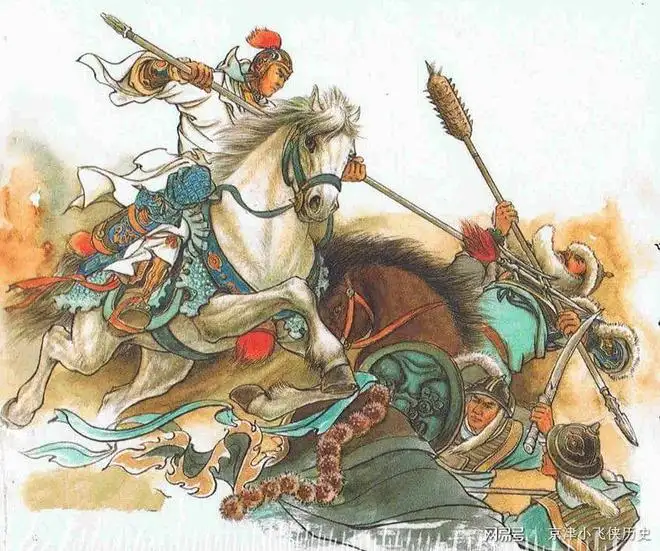 The 'Horse Stance' (馬步 - Ma Bu) Developed from the Need to Sit Upon the Back of a Horse (or Pony) and Control that Animal by the 'Gripping' of the Legs as They Envelop (and Control) the Belly of the Horse! The Pelvic-Girdle Shifts Left, Right or Centre as it 'Directs ' Force! The Horse Moves in the Direction of the Line of Greatest Force! This Technique, When Applied to Standing on the Ground, Generates health, Longevity and tremendous Martial Power! This is Channelled Through the Torso, Head, arms, Legs, Hands and Feet! This is Seen in All Chinese Forms and Japanese Katas! Dear Tony
It is interesting what you say about the idea the of Seiunchin and Seipai Katas once forming a single unit of practice (that is a 'single' Kata). This is exactly the same situation with the three Longfist Forms in our family Hakka style - which contain 32 movements each - but once was practiced as a single Form containing 96 movements! To assist the investigation we can have a look at the etymology of the names of these two Goju Ryu Kata and see if any evidence presents itself: Kata - Seiunchin = 制引戦 制 (Chinese) = Zhi - 制 (Japanese) = Sei - Control, Plan, Regulate, Law, Limit 引 (Chinese) = Yin - 引 (Japanese) = In - Draw (a bow), Pull, Lead, Stretch, Admit, Evade (Leave) 戦 (Chinese) = Zhan - 戦 (Japanese) = Sen - Battle, Fight, War and Conflict Seiunchin Kata = Careful Bow-Drawing in Battle Chinese Name = Zhi Yin Zhan (制引戦) Japanese Name = Sei In Sen (制引戦) Okinawa Name = Sei Un Chin (制引戦) Kata - Seipai = 十八手 十 (Chinese) = Shi - 十 (Japanese) = Ju - Ten, 10, X, Perfection and Utmost 八 (Chinese) = Ba - 八 (Japanese) = Hachi - 8, eight, VIII, Divide and Differentiate 手 (Chinese) = Shou - 手 (Japanese) = te - hand, open (hand), grip and handle Seipai Kata = Eighteen Open Hand Chinese Name: Shi Ba Shou (十八手) Japanese Name: Ju Hachi Te (十八手) Okinawa Name: Seipai (十八手) It looks to me that the last word of the written name '十八手' (Shi Ba Shou) is missing in the way the Kata is named in the West. It seems that the Okinawan 'Seipai' equates to the Chinese 'Shi Ba' (Eighteen - as in '10' + '8') - but that the ideogram '手' (Shou) is missing from the name. The Okinawan name should probably read 'Seipaisou' or something similar. We are probably seeing the Fujian dialect preserved through the Okinawan language - with a descriptive word missing when the Kata is vocally discussed! I do not know why this is. What might be of significance is Pan Yu Ba's 'Arahant Fist' (羅漢拳 - Luo Han Quan) - which is also known as 'Arahant Eighteen Hands' (罗汉十八手 - Luo Han Shi Ba Shou). Does the Seipai Kata represent the 'Arahant Fist'? Even so, there is the closed 'fist' (拳 - Quan) and then there is the 'Open Hand' (手 - Shou). As you know, Sensei, both types of hand are always used - together with the 'palm' (掌 - Zhang). When I was in various Buddhist temples in China, most had statues of the Eighteen Arahants (all enlightened visitors from India thousands of years ago) spread around the periphery of the grounds facing outward with each statue holding different positions with their hands and feet (this sometimes reminds me of Tensho Kata). I spoke and practiced with Warrior-Monks and Nuns who all talked about rebirth, karma and 'meeting' one another again in different lifetimes. There was no violence at all with the flowing hand and foot movements 'evading' every violent movement. However, these people 'sensed' exactly when greed, hatred and delusion was present in the mind of the opponent - and they immediately took action to dissolve it with loving kindness, compassion and understanding! Most of these 'Arahant' Forms involve 'evasion' and simply 'not being there' rather than any forceful application. When power was needed, however, it was generated a) from the ground, and b) from the body-mass of the opponent - as their bodyweight was momentarily 'borrowed' before being 'given back'! What we might be looking at is a combined Goju Ryu Kata entitled 'Arahant Eighteen Hands Regulate and Drawing the Battle Bow'! It could be named like this '羅漢十八手制引戦' (Luo Han Ba Shou Zhi Yin Zhan). Thanks Adrian  The Article is from the Fuzhou Wushu Association which Carries Out Ongoing Research into the Chinese Origins of Okinawan Goju Ryu Karate-Do! This Article is Hosted on the Above Website in Zhejiang (China) Which was Established in 2008 as an Education Facility Introducing Okinawan Goju Ryu Karate-Do to the General Population! The Above Chinese Language Script Reads '冲绳刚柔流空手道华道馆' or 'Okinawan Goju Ryu Karate-Do - Culture Way Hall' 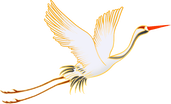 Elegant White Crane! Elegant White Crane! Translator’s Note: This Chinese language article was originally published by the Fuzhou Wushu Association in 2009 (on a Chinese language website based in Zhejiang dedicated to the history, theory and practice of Okinawan Goju Ryu). The content covers events from twenty-years earlier (c. 1989) and seeks to discover who was the Chinese Master who taught Fujian martial arts to the Okinawan traveller - Higaonna Kanryō. Researchers outside of Asia tend to approach this subject from the Anglicised rendering of a Chinese name preserved in Japan - ‘Ryu Ryu Ko’ - which often causes confusion amongst Westerners as it seems very similar to the title of the unconnected ‘Ryu Kyu’ (琉球) Islands – the name of the chain of islands Okinawa happens to be part of. Within Japan and China today, the title ‘Ryu Ryu Ko’ is shortened to ‘Ro Ro Ku’ - as it is a ‘nickname’ the phonetical expression in the English language is only approximate. A number of Chinese researchers are of the opinion that ‘Ryu Ryu Ko’ (如如哥) is a title more likely to have been used in Beijing and is unlikely to have been used in Fuzhou. What is mentioned but not elaborated upon in this article – is the historical reality that ‘Officials’ (that is those individuals who have studied for, sat and passed the Imperial Examinations) were often posted to faraway places where it was their duty to communicate in the ‘Beijing’ dialect (the language of governance throughout China regardless of local dialects). An example of this involves the famous Ch’an Buddhist Master Xu Yun (1840-1959) who was born in the Quanzhou area of Fujian province. His is father was a government ‘Official’ working in Fujian province who was originally from Hunan. Despite living in Fujian province, at home Master Xu Yun’s family spoke the Hunan dialect whilst at work his father spoke the Beijing dialect. Despite being posted together with his family faraway – the connection with the ancestral land was never forgotten or given-up. Marriage partners were chosen from Hunan for Hunanese men and women born in Fujian – and when deaths occurred, the bodies were ceremoniously taken back to Hunan for burial. Therefore, it is not beyond the realms of possibility that Ru Ru Ko was from a family of ‘Officials’ that had originated in Beijing but had been posted to Fujian. This is a realistic example of how ‘Ru Ru Ko’ could have been from a cultural milieu originating in Beijing. As multiple languages are being used (Japanese, Chinese and English), as well as transliteration and phonetical interpretations, it is important that the logical basis of this article is clearly established. Needless to say, research in the Chinese cultural milieu is very different to research carried-out in the English language. For the Chinese language researcher, the investigation begins with the ideograms ‘如如哥’ (pronounced ‘Ru Ru Ge’). This has no obvious linguistic or cultural connection with the Fujian dialect. In Japan these three ideograms are transliterated as ‘儿 - 儿 - コ’ (Ru Ru Ko) - but ‘why’ these ideograms were chosen is something of a mystery as the ideogram ‘儿’ is a simplification of ‘兒’ (er2) which means ‘child’ or ‘son’ (which is used twice). Bear in mind that many Japanese ideograms are either direct borrowings from the Chinese language or modifications. The third ‘Japanese’ ideogram ‘コ ‘ is from the ‘Katakana’ categorisation of symbols – and again refers to a ‘child’ (as in a boy or a girl). This suggests that the Japanese term 儿 - 儿 - コ’ (Ru Ru Ko) quite literally means ‘Child (boy), Child (boy), Child (boy or girl). Therefore, the Japanese term (in Romanji) - of Ru Ru Ko contains no inherent or hidden meaning – and gives no clues as to the identity of the Chinese holder of the name. It appears to be purely phonetical in nature – as if the name were only passed-on by word of mouth and was never written down at the time of being transmitted. Indeed, Higaonna Kanryō admitted that it was difficult to linguistically communicate when he arrived in China. Ru Ru Ko is thought to have been born around 1820 whilst his death date is unknown. Furthermore, whoever he was - his true identity is not known. During the Battle of Okinawa (fought between April 1, 1945 – June 22, 1945) and which cost 110,000 Japanese and Okinawan causalities – as well as around 12,500 US casualties. Okinawa was totally devastated due to the ferocious nature of the fighting. This led to the near total destruction of all paper records (as libraries and private homes were totally destroyed). Many of the best and well-educated martial artists in Okinawa fought in the frontline against the invading American Forces – and were killed – whilst others later died from wounds or committed suicide. The elderly people – if not already evacuated – were killed in the vicious crossfire! It is equally true that large areas of Southern and Eastern China were also devastated during the 1930s and 1940s due to the presence of the Imperial Japanese Army, etc. This physical death and destruction eradicated a vast material and intellectual historical database and is one of the reasons why there are large gaps in details available. The name of the Master in question is often presented using the three Chinese language ideograms of ‘刘良兴’. This can cause further confusion as these three ideograms can be read in the Chinese language as ‘Liu Liangxing’ - giving the impression that this is a legitimate name. This is not the case as the Japanese use of these ideograms is an alternative way of expressing the far more simplistic ‘儿 - 儿 - コ’ (Ru Ru Ko). This is because ‘刘’ (Liu) can be expressed with the hiragana syllable ‘る’ (ru) and the katakana syllable of ‘ル’ (ru). The second ideogram ‘良’ (Liang) can be expressed as ろう (rō) - whilst the third ideogram ‘兴 ‘ (Xing) is represented by ‘こう’ (kō). Technically speaking, this can be read in the Japanese language as ‘Ru Ro Ko’, etc. Therefore, ‘刘良兴’ = ‘儿 - 儿 - コ’ (Ru Ru Ko) is not a specific name in and of itself. Whereas Chinese language users will read the ideograms of ‘刘良兴’ as ‘Liu Liangxing’ - Japanese language readers see only ‘Ru Ru Ko’! Another way of writing the name of this Fujian White Crane Fist Master is ‘Liu Xiangjing’ (刘祥京) - which is considered a genuine name. I cannot find any independent data about this Master on the Chinese language internet – but information possessed by the Fuzhou Wushu Association records this man as being a famous martial arts teacher in the Fuzhou area. Indeed, the entire point of this Fuzhou Wushu Association article is that although considered as a candidate – there is no reliable evidence linking ‘Liu Xiangjing’ (刘祥京) to Okinawan Goju Ryu. Xie Chongxiang (謝崇祥) [1852-1930) was a very famous martial artist from Changle County situated within the Fuzhou area of China. He trained under Master Pan Yu Ba (潘嶼八) who transmitted the ‘Shaolin Arahant Fist’ (少林罗汉拳 - Shao Lin Luo Han Quan) to him (some sources suggest that he also learned the ‘Southern Shaolin White Crane Fist’ [少林白鶴拳 - Shao Lin Bai He Quan] system). Xie Chongxiang was also renowned for developing the ‘Whooping Crane Fist’ (鸣鹤拳 - Ming He Quan) style. There appears to be a connection between Higaonna Kanryō and Xie Chongxiang due to the names that were used by his disciples which are very similar to those found in the Goju Ryu tradition. ACW (31.7.2022) According to the historical records of Fuzhou Wushu Association: A number of representatives of different Okinawan Goju Ryu karate schools (since 1983) - have visited Fuzhou at different times – all seeking historical information. It is the official policy of the Fuzhou Wushu Association to assist these enquiries and help these researchers discover reliable information about the original Chinese ancestor who taught the Okinawan martial artist named ‘Higaonna Kanryō’ [東恩納 寛量 - Dong En Na Kuan Liang] (1853–1915) who trained in China over a fourteen year-period between 1867-1881. It is believed by tradition that Higaonna Kanryō trained in Fuzhou under the Chinese Master named ‘Liu Liangxing’ (刘良兴) - although this is the Japanese transliteration. However, this Chinese Master is also known as ‘儿 - 儿 - コ’ or ‘RU-RU-KO' (Beijing interpretation). We believe that this matter is of great and special significance in the strengthening and consolidating of the traditional friendship between the two sister cities of Fuzhou and Naha - and to continue a good and friendly association between martial artists from Fuzhou and Okinawa. To this end, the Fuzhou Wushu Association takes this mission very seriously, and has actively organized investigative forces, conducted multiple enquiries and has repeatedly opened new lines of enquiry. Due to the length of time between now and the historical period concerned, this research has proven to be very difficult to ascertain and/or confirm. This research has now been ongoing for twenty-years and there is hope that major breakthroughs will eventually occur as new historical documentation becomes apparent. A similar undertaking has been pursued regarding the ‘Uechi Ryu Karate-Do' style of Okinawan martial arts – which identified the Chinese teacher known in Okinawa as ‘Zhou Zihe’ (周子和)! During early March 1988, the President of the Okinawan Goju Ryu Tomarite Association - Tokashiki Yukashiki, (渡嘉敷唯贤 - Du Jia Fu Wei Xian) - acting on inaccurate information provided by the Fujian International Travel Service, believed that the Fuzhou Wushu Association had discovered and confirmed the identity of the Chinese Master who had taught Higaonna Kanryō, and made a false accusation that the Fuzhou Wushu Association was deliberately ‘withholding’ important historical information and that this data should be immediately handed over! This confusion derived from the fact that the Fuzhou Wushu Association was investigating a historical figure named ‘Liu Liangxing’ (刘良兴) - a well-known martial artist who possessed a name very similar sounding to ‘Liu Xiangjing’ (刘祥京) - but it has not been possible to prove a definite or conclusive historical connection. When this reality was explained to Tokashiki Yukashiki – he was of the opinion that we were acting unfriendly – which is untrue. The point is that there is much more investigative work still needed to be carried out. If a definite and verifiable historical connection is discovered – then the Fuzhou Wushu Association will definitely make this information public knowledge. Despite explaining this issue thoroughly, Tokashiki Yukashiki refused to listen and returned to Okinawa where he published a series of articles in the Ryukyu Times (over a ten-day period) between March 9 -18, 1988 – falsely stating that ‘Liu Xiangjing’ (刘祥京) has been identified as the historical figure ‘Liu Liangxing’ (刘良兴) and the teacher of Higaonna Kanryō - by the Fuzhou Wushu Association! At that time, this assertion caused an uproar throughout the Okinawa martial arts community, and the Fuzhou Wushu Association was contacted by a number of concerned historians and martial artists! Okinawan experts agreed with the findings of the Fuzhou Wushu Association and confirmed that there is no obvious historical connection between these two figures – but that ALL avenues of investigation must be carefully pursued and considered. Following this public ridicule, Tokashiki Yukashiki attempted to explain his irresponsible actions by claiming his articles were intended as a ‘joke’! As a way of attempting to settle this matter, the Fujian International Travel Service commissioned ‘Lin Weigong’ (林伟功) - a Cadre of the Fuzhou Local Chronicles Editorial Committee – to investigate this matter whilst liaising with Tokashiki Yukashiki, so as to avoid all further misunderstanding. Lin Weigong – after considering ALL the available historical evidence – eventually produced the article entitled ‘Okinawan Goju Ryu: Examining the Biographical Details of of Higaonna Kanryō and His Chinese Teacher Ru Ru Ko!’ (日本冲绳刚柔流空手道宗师东恩纳宽量之中国师傅儿-儿-コ小考). Tokashiki Yukashiki reviewed this document and declared its content to be a ‘remarkable monument’ for Ru Ru Ko – or ‘Xie Chongxiang’ (谢崇祥) of Fuzhou! Lin Weigong’s ‘Biographical Investigation’ made the following observations: 1) NAME: Recorded as ‘儿 - 儿 - コ’ (Japanese) - RU-RU-KO - and correlates to ‘如如哥’ (Chinese) RU RU GE. His family or clan name was ‘Xie’ (哥) - his first names were ‘Chongxiang’ (崇祥). Indeed. if the master and disciple were of similar ages (or perhaps only one year a part in age) – they could have considered themselves to be ‘brothers’. Therefore, the designation RU RU KO – RU RU GE would be considered correct (in the Beijing dialect) – as the teacher could be a slightly older brother. Xie Chongxiang, however, was from Fuzhou and in the Hokkien dialect he was referred to as ‘Ru Si’ (如司) which would imply a ‘Master’ (师 - Shi). ‘Ru Si’ (如司) translates as ‘Likable Teacher’ in Hokkien. Why is this teacher’s designation recorded in the Beijing dialect – but NOT in the Fuzhou (Hokkien) dialect? Why is the Hokkien variant not known in Okinawa? Fuzhou people tend to use two ideogram descriptions pronounced by a single syllable – but never use three ideogram expressions. Whereas ‘Ru Ko’ and ‘Ru Ge’ are possible in the Hokkien dialect - ‘Ru Ru Ko’ and ‘Ru Ru Ge’ are not used. Recently, a book remembering the old martial arts Master - ‘Yu Baoyan’ (余宝炎) - was published which supports the research of Lin Weigong. This book was written by Yu Baoyan’s son – named ‘Yu Mou’ (余某) - and is entitled ‘Remembering My Father Yu Baoyan’ (忆父亲余宝炎). Within this research, the author has discovered at least five places in the historical records where Xie Chongxiang is referred to by the Hokkien designation ‘Ru Shi’ (如师)! The Editor-in-Chief of the book is one ‘Xie Qiquan’ (谢其铨). In the chapter entitled ‘Whooping Crane Fist of Lineage Master Xie Ru Ru’ (鸣鹤拳宗师谢如如) - Xie Qiquan quotes two lines of poetry preserved within the Fuzhou (Hokkien) dialect which reads ‘If Ru Si raises just the tip of a single arrow – then even the Immortals and the Gods cannot compete with him!’ and ‘When Ru Si gently lifts, presses and separates – the Immortals and the Gods cannot stop him!’ (“ 如司单基举箭,神仙也难战”,“如司柔搅劈,神仙挡不住”。) It can be clearly seen from this information that Xie Chongxiang (谢崇祥) is his original name, and ‘Ru Si’ (如司) is his nickname. This is why the native people of Fuzhou refer to this individual as ‘Ru Si (Shi)’ - 如司 (师)- or ‘Likable Teacher - (Master)’! The research carried out by Lin Weigong demonstrates that the terms ‘Ru Ru Si’ (如如司) and ‘Ru Ru Ge’ (如如哥) - transliterated into the Japanese language as ‘Ru Ru Ko’ - are in fact arbitrary naming errors (怪名 - Guai Ming) probably made during the copying process from one language into another. This led to a single ideogram being mistakenly copied ‘twice’ - and this error being made into a convention (preserved during the transmission of Goju Ryu to the West). Furthermore, the ideograms ‘如如’ (Ru Ru) are also pronounced in the Beijing dialect as ‘Ru Ru’! According to the Introduction provided by the two experts Director Xie Bizhen (谢必震) and Professor Xu Gongsheng (徐恭生) of the ‘Research Office of the History of Sino-Ryukyu Relations’ - located within Fujian Normal University – it is stated that at the time most people in Fuzhou could not speak the Beijing dialect (the so-called ‘Mandarin’), and only ‘scholars’ had to learn the Beijing dialect if they wanted to take part in the Beijing imperial examinations. This implies that it is unlikely that a martial arts Master – or his disciple – would communicate to each other in Fuzhou using the Beijing dialect. 2) DESCRIPTION OF BODY-TYPE: The available data in Fuzhou suggests that Xie Chongxiang (谢崇祥) also known as ‘Ru Ru’ (如如) - was short (1.55 meters) and stout in stature. He was small and inconspicuous. He chose not to stand-out in a crowd. According to a number of Japanese language sources (preserved within the various Goju Ryu schools), however, ‘Liu Liangxing’ (刘良兴) is said to have been 6 foot in height (1.80 meters) and was generally considered tall and burly and to stand-out in a crowd – a physical description which is the exact opposite of that pertaining to ‘Xie Chongxiang’ (谢崇祥) - also known as ‘Ru Si’ (如司)! 3) OCCUPATION – PROFESSION: Xie Chongxiang (谢崇祥) also known as ‘Ru Ru’ (如如) - was taught the skill of ‘Shoe-Making’ by his father at the ‘Bao Mei Zhai’ (宝美斋) Shoe Shop in Fuzhou. At the age of 31 he was considered a shoemaker in his own right, and he established a School for Shoe-Making Apprentices at a local Temple (庙 - Miao) situated on Shanghang (上杭) Street. According to the information provided by the International Okinawa Goju Ryu Karate Federation: Higaonna Kanryō recalled that Master RU-RU-KO (Liu Liangxing - 刘良兴) was originally born as a nobleman. In the second half of the 19th century, Chinese society was in turmoil, and the ‘Liu Liangxing’ (刘良兴) and his family kept their origin and status secret. Indeed, he took a job making tiles and operating a kiln. He eventually rented a two-storey house by the river in the suburbs (living by himself), making a living as a blacksmith. Lin Weigong has seen this description confirmed in a biographical text entitled ‘Ox-Head’ (牛头 - Niu Tou) - but it differs from the description found in the biographical text entitled ‘Horses-Mouth’ (马嘴 - Ma Zui). 4) AGE: Xie Chongxiang [谢崇祥] (Ru Si - 如司) was born in 1852, while RU-RU-KO (Liu Liangxing - 刘良兴) was born in 1853. Given that Higaonna Kanryō was also born in 1853 – then the age difference between master and disciple would be either no years or only one year! This seems an unreasonable assumption as ‘Higaonna Morio’ (东恩纳盛男) - whilst passing-on details preserved by the third generation Goju Ryu Master Miyagi Anichi (宫城安一) - states that the age difference between master and disciple was at least twenty-five years! Indeed, due to the advanced years of his teacher - Higaonna Kanryō - was advised to return home. 5) MARTIAL ART NAME: The available biographies state that the martial art in question is named ‘鸣鹤拳’ (Ming He Quan). This can be translated as: a) 鸣 - (ming2) = A cry issued forth by a bird, insect or other animal. b) 鹤 - (he4) = Specifically a ‘White’ bird defined as a ‘Crane’. c) 拳 - (quan2) = A hand which is ‘closed’ - specifically a ‘clenched’ fist. 6) MARTIAL ART THEORY: This Chinese martial arts style has the ‘Three Battles’ (三战 - San Zhan) technique as its foundational ancestor. This agrees with the records as preserved in Japan where this technique is referred to as ‘Sanchin’. In fact, within the Fuzhou area of China, the ‘Three Battles’ (三战 - San Zhan) technique is the foundation of many if not all ‘Southern Fist’ (南拳 - Nan Quan) martial styles – including ‘Dragon’ (龙 - Long), ‘Crane’ (鹤 - He), ‘Tiger’ (虎 - Hu), ‘Lion’ (狮 - Shi) ‘Arahant’ (罗汉 - Luo Han) and ‘Ground Technique’ (地术 - De Shu), etc. Therefore, the ‘Three Battles’ (三战 - San Zhan) technique is not unique to ‘Whooping Crane Fist’ (鸣鹤拳 - Ming He Quan). The available biographies record that the ‘Song of Bright Reason’ (明理歌 - Ming Li Ge) states that ‘Whooping Crane Fist’ is defined by a rapid interchange of ‘hard’ and ‘soft’ (刚柔相济 - Gang Rou Xiang Ji) martial techniques – and that this is the defining characteristic of this style. As this style spread to Okinawa whilst retaining its reliance upon rigidity and giving-way – it became known in the Japanese language as the ‘Hard-Soft’ (Goju) Karate style. Higaonna Morio states that Miyagi Chojun (宫城长顺) - who was a disciple of Higaonna Kanryō - remembered that his teacher (Higaonna Kanryō) brought a martial manual back from China entitled the ‘Martial Preparation Record’ (武备志 - Wu Bei Zhi). One line reads ‘法刚柔吞吐’ (Fa Gang Rou Tun Tu)’ which translates as the ‘law of hard and soft operates throughout’. This was taken to mean that the main martial principle in operation is that of the continuous interchange of ‘hard-soft’ (刚柔 - Gang Rou). This is exactly how the style of Goju Ryu Karate-Do was named by Miyagi Chojun – after he read the specific line mentioned above as contained in the martial manual brought back from China by his teacher - Higaonna Kanryō! This is why the Goju Ryu style of Karate emphasises the rapid interchange of hard and soft martial techniques. Points that need clarifying. Combining rigidity with softness is the general rule for ALL styles of ‘Southern Fist’ (南拳 - Nan Quan) originating within the Fuzhou area. This is not a martial principle unique to ‘Whooping Crane Fist’ (鸣鹤拳 - Ming He Quan). Therefore, naming this style after this principle is far too general and conveys nothing of the original style when considering how many styles that have been developed throughout the Fuzhou area. Knowing the guiding (and underlying) operating principle tells historians nothing about the name (or origin) of the martial art style concerned. In theory it could be related to any of the Fuzhou martial arts styles listed above. This suggests that the compiler of the traditional biographies surrounding the history of the transmission of Goju Ryu from Fuzhou to Okinawa did not possess a good or sound general knowledge of the martial art styles operating in and around the Fuzhou area – and this is something of a mystery. This suggests that a crucial element of historical (cultural) data is missing from the biographies surrounding the transmission of a Chinese style of Fujian martial arts to Okinawa! 7) DISCIPLES: The biographies state that students of this martial arts style must show a good and virtuous character whilst also achieving an advanced martial ability! The student is tested both morally and physically when entering this martial arts style! Both mind and body are developed equally! If the biography of Higaonna Kanryō is correct - then his Master was named ‘Xie Chongxiang’ (谢崇祥) and he was called ‘Ru Ru Ko’ - or ‘Ru Ru’ (如如)! It must also be acknowledged that training in this way and following these martial principles are commonplace within the Fuzhou area. Therefore, Higaonna Kanryō could have trained with any number of teachers all behaving very similarly and demanding equally high standards of commitment and endeavour! Fuzhou has very high martial standards and what Higaonna Kanryō describes could relate to any number of martial arts masters living in the area. The area is renowned for its severe and highly demanding martial arts standards! Due to the missing historical and cultural data it is correct to say that the available biographies regarding the experiences of Higaonna Kanryō in China are incomplete. Why is this? Has data been taken out? Has data gone missing? Did the compilers lack a basic cultural understanding of the martial culture operating in and around Fuzhou? With this kind of crucial data missing, it is very difficult to get to the root of the matter. On April 20, 1989, the above research by Lin Weigong was made public in the ‘Fuzhou Evening News’. Some months later, on October 19th and November 1st, 2022, two readers separately raised the questions ‘Who was the Chinese Master of the Japanese Higaonna Kanryō?’ and ‘Is Japan’s Goju Ryu Karate and China’s Whooping Crane Fist Directly Related?’ This is because Lin Weigong’s article caused so many doubts (and triggered in-depth debate) that it was printed twice six months apart! This piece was entitled ‘Discussion with Comrade Lin Weigong’ (与林伟功同志商榷) - and because of all the doubts and missing historical and cultural detail it was decided that it is too early to build a monument to ‘Xie Chongxiang’ (谢崇祥) in Fuzhou. More evidence needs to be ascertained before such an undertaking can be formally considered. During August 1989, when Xu Cai (徐才) - the Chairman of the Chinese Wushu Association was informed about this matter – he stated that in accordance with the spirit of seeking truth from facts, a scientific attitude should be adopted, and this issue should not be forced. On the basis of sound historical research and expert appraisal, a scientific basis must be established. Either there is a ‘fact’ or there is ‘no fact’ - there cannot be any grey areas! For this reason, we believe that textual research on historical figures should be treated with a serious and exact attitude so that truth can be extracted from facts. The establishment of historical fact cannot be arbitrarily shaped. If it is correct that Higaonna Kanryō was taught by a Chinese Master named ‘Xie Chongxiang’ (谢崇祥) - who was called ‘Ru Ru Ko’ - then this must be proven beyond any reasonable doubt. Doubt must be removed through good quality research and the establishment of historical fact. In China we possess a responsibility to our own martial history in Fuzhou – and we also possess a responsibility for all the Karate-styles in Okinawa (and Japan) whose practitioners believe their martial systems originate in China! Remember, many Okinawan and Japanese martial styles have spread worldwide – as have many Chinese martial systems! Establishing a correct history is not a laughing matter and is a very serious affair. If false claims are made, then this issue becomes a laughing matter not only in Fuzhou – but also throughout the martial arts schools of Okinawa! December 23, 2009 Chinese Language Article:
https://web-archive-org.translate.goog/web/20131009224220/http://gojuryukarate.cn/showart.asp?art_id=33&_x_tr_sl=zh-TW&_x_tr_tl=en&_x_tr_hl=en&_x_tr_pto=sc 福州武术协会寻查RU-RU-KO过程与看法 据福州武协历史资料记载:冲绳刚柔流空手道各派,自1983年开始,直到现在都先后陆续来到福州,希望福州武协能够协助他们寻查其原祖东恩纳宽量在1867年—1881年间,在福州学武时的师傅刘良兴(日语译音),冲绳武术界称他为“ 儿 - 儿 - コ(日文) RU-RU-KO (北京音)”。我们认为,此事对加强与巩固福州、那霸两个友好城市的传统友谊、对福州武术也有着重大而特殊的意义。为此,福州武协十分认真,并积极地组织力量,多方调查,反复论证。由于时间太久,缺乏历史资料,虽查有数人,均似是而非,难予最后确认。20多年来,不间断地在继续调查中。冲绳上地流空手道也有类似之事,对周子和的寻查圆满成功。 1988年3月初,冲绳刚柔流泊手会会长渡嘉敷唯贤,根据福建省国际旅行社提供的不准确的信息,认为福州武协已找到冲绳刚柔流的师祖,要求我们把调查材料交给他们,当时我们虽然正在调查一个姓名、住处与“刘良兴”近似的已故老拳师“刘祥京”。但缺乏更多的事实可作论证。当我们把调查过程告诉渡嘉敷唯贤,并一再说明,这尚无有力、确凿的证据,还要做大量的考证工作。但他却认为我们对他不友好,不给他们真实材料。虽经我们再三说明、解析,而他回冲绳后,即于1988年3月9日—18日在《琉球时报》连载10天,说东恩纳宽量在福州的师父即“刘祥京”已调查证实。当时给冲绳武术界引起了轩然大波,纷纷向福州武协提出质疑。他们从多方面证明,均认为《琉球时报》报导不实。随后,渡嘉敷唯贤在冲绳也否认了他的报导事实,闹了一场笑话。接着渡嘉敷唯贤又经国际旅行社介绍,委托福州市地方志编委会的干部林伟功调查。随后林伟功写了一篇《日本冲绳刚柔流空手道宗师东恩纳宽量之中国师傅儿-儿-コ小考》一文,交给渡嘉敷唯贤,渡嘉敷唯贤据此为儿-儿-コ(谢崇祥)在福州立了“显彰碑”。 林伟功所谓的《小考》,其论据如下: 一、 姓名:《小考》说, 儿 - 儿 - コ(日文) RU-RU-KO (北京音)的真名应是 “ 如如 ” (北京音),他姓谢,族字崇祥,北京音 “RU-RU-KO 即如如哥 ” 。因师徒只相差一岁,所以用兄弟相称,叫 “RU-RU-KO 如如哥 ” 。从名字上 “ 考证 ” , RU-RU-KO 即 “ 如如哥 ” 无误。 可是谢崇祥,福州社会上普遍是福州话叫“如司(师)”,在福州武术界无人不知的事实,但却没有人知道有福州话的“如如司”者。而福州人的习惯,凡双字同音者只称单字,如:“如哥”、“如司”等,从没人称“如如哥”、“如如司”。最近老拳师《余宝炎》一书出版。该书是宣扬林伟功观点的。余宝炎儿子余某,在书中写一篇《忆父亲余宝炎》一文中,却有五处称谢崇祥为 “ 如师 ”。该书主编谢其铨在《鸣鹤拳宗师谢如如》一文中,引用了福州话顺口溜“ 如司单基举箭,神仙也难战”,“如司柔搅劈,神仙挡不住”。由此可见,谢崇祥是他的原名,“如司”是他的别称。所以福州人都称他为“ 如司(师)”,而“如如司”或“如如哥”只是林伟功偷梁换柱,任意塑造的“怪名”。况且“ 如如”二字是以 北京音才能与 RU-RU相近。据福建师范大学“中琉关系史研究室”谢必震主任和徐恭生教授介绍,二位专家说,当时福州一般人都不会说北京话(即所谓“官话”),只有“秀才”,要上京考试要学北京话。所以,学武的师徒之间,更不可能用北京话相称。 二、 体型:《小考》说, 谢崇祥(如如)身材矮小( 1.55 米左右)粗壮,外表看个小很不起眼。据日本各派提供资料:RU-RU-KO(刘良兴)身高6尺(1.80米左右),身材高大魁梧,这与谢崇祥(如司)的体型完全相反。 三、 职业:《小考》说, 谢崇祥(如如)其父让他在宝美斋鞋铺学做鞋艺, 31 岁时在福州上杭街直冲庙设馆授徒。据国际冲绳刚柔流空手道连盟提供的资料:东恩纳宽量回忆师父RU-RU-KO(刘良兴),原是出生于贵族。19世纪后半叶,中国社会动荡不安,“刘良兴”一家都隐姓潜伏,蓄发藏身于瓦窑,为普通瓦工,平时烧瓦、叠瓦。后辞去瓦窑工作,独自租住郊外河边的两层高的房子,以篾匠维持生计。这与《小考》所提的职业,“牛头”对不了“马嘴”。 四、 年龄:谢崇祥(如司)出生于 1852 年,而 RU-RU-KO (刘良兴)出生于 1853 年,师徒仅相差一岁。这与一般情理不合。据东恩纳盛男提供资料,其第三代传人,宫城安一说,师徒间大约相差25岁左右。因师父年老,所以令东恩纳宽量回琉球。 五、拳论、拳名:《小考》说: 根据 “ 拳论 ” (鸣鹤拳): “ 本法以三战为祖 ” ,这与日方视以 “ 三战 ” 为根本是相通的。实际上福州传统南拳,如:龙、鹤、虎、狮、罗汉、地术等拳术都是以“三战”为基础,不是鸣鹤拳独有的。《小考》又说: 《明理歌》鸣鹤拳中就有 “ 刚柔相济 ” 的提法,而此拳就是以刚柔为根本的,故拳名为 “ 刚柔流空手道 ” 。 在东恩纳盛男提供的资料中说:刚柔流空手道是东恩纳宽量的学生宫城长顺,从福州带回的中国武术书刊《武备志》中所提的“法刚柔吞吐”一语中,取“刚柔”二字,作为该流派的名称,故名“刚柔流”空手道。“刚柔相济”是福州一般南拳拳术的普遍风格,也更不是鸣鹤拳所专有。所谓的“刚柔相济”与刚柔流拳名,毫不相干,风马牛不相及,由这二点所谓的《小考》,可知 《小考》笔者毫无福州传统南拳的一般常识, 任意推测、 “ 考证 ”,太过无知可笑。 七、 授徒:《小考》说: 双方授课时,对徒弟要求极严,品德要求高,极重武德。这些双方都不谋而合,这与源流有关,如如均是这样要求,考验徒弟的。 《小考》以此证明RU-RU-KO就是谢崇祥(如如)。那么,福州市的绝大部份的老拳师对学徒都极严格,极重武德,也就都可称为RU-RU-KO,岂不是也都可成为东恩纳宽量的师父了吗?综上所述,所谓的《小考》,并无一点可以站得住脚, 毫无 “ 考证 ” 价值,对历史人物的考证,不严肃认真、任意推测塑造,草率行事。 当1989年4月20日,上述《小考》的内容在《福州晚报》公开宣扬后,10月19日与11月1日即有二名读者分别以《日本东恩纳宽量的师父到底是谁?》及《日本刚柔流空手道与福州鸣鹤拳同宗吗?》,两次出现《与林伟功同志商榷》的文章,认为疑点太多,太过草率,影响不好,反对在福州市为谢崇祥立“显彰碑”。 1989年8月中国武协主席徐才知道后,认为按照实事求是的精神,理应采取科学的态度,不可迁强附会。在历史考证、专家鉴定基础上,提出科学的依据。有或无、是或非,有则有之,无则无之, 千万不要似是而非。为此,我们认为考证历史人物要以实事求是的精神,认真、严肃的态度对待。不能草率、任意塑造。所谓“谢崇祥就是RU-RU-KO,也就是东恩纳宽量在福州学武时的师父,就是刚柔流空手道的始祖”,并为他树立了所谓的“显彰碑”,这不仅在福州市武术界中,而且在冲绳各派空手道中,都成了天大的笑话。 2009年12月23日 When the British Authorities 'Surrendered' on Christmas Day, 1941, the Japanese Imperial Army began their reign of terror and endless massacres of th local Chinese population of the New Territories and Hong Kong Island - sparing no one in their path! The Japanese Imperialists were joined by the Sikh contingent of the British Police and British Army - who changed sides and aligned themselves with Japanese fascism! The Sikh leader at the time mistakenly believed that India would be 'freed' by the Japanese fascists! I suspect the Sikh's were surprised when the Imperial Japanese began massacring the Indian population as well - seeing the Indians, Europeans and Chinese as being racially inferior! The Hakka Chinese population of the New Territories and Hong Kong Island elected (through their Clan Associations) to continue to fight the invading Imperial Japanese using traditional weaponry and unarmed martial arts skills. This was necessary as the British imperialists had withheld all modern weaponry from the hands of the indigenous Chinese population as it was believed the ethnic (local) Chinese would form a 'Communist' insurgency and attempt to other throw British rule! The Hakka Chinese put up a very good fight and inflicted thousands of casualties upon the Japanese. The Hong Kong Navy consisted of one motorboat captained by an 'Admiral Chan' who had a wooden-leg. When the Japanese began the final push onto Hong Kong Island - his boat was quickly sank and he was marooned on a small island in Hong Kong harbour. The Japanese recall that this old man took-off his wooden-leg and used it to batter senseless any Japanese soldier who tried to take his little island! Remarkably, Admiral Chan was rescued from his predicament and went on to live well beyond the end of WWII! Our Chinese Grandmother - Cheung Yiet-Tai - used to tell us the horrific stories of the Japanese atrocities carried-out in the New Territories by the Imperial Japanese Army! Master Chan Tin Sang was 17-years-old in 1941 when the anti-Japanese fighting started in the Hong Kong region - whilst Cheung Yiet-Tai was also 17-years-old. The Imperial Japanese had started a campaign of the mass rape of young girls and women. Cheung Yiet-Tai had to hide whilst her mother was gang-raped, hung-up by her hair, 'skinned' and then finally burned to death! This was a terrible fate that befell many thousands of young Chinese women and girls! Whilst the female Chinese population hide with their children in the many cave systems throughout the coastal areas, the the Chinese men formed a guerrilla army and took to covert military action. This fighting was absolutely brutal and each day saw hundreds of Chinese men NOT returning to their awaiting families! When the returning British retook control of Hong Kong in 1945 - they were astonished to hear that the local Chinese Hakka population had continued to fight between 1941-1945 without the aid of modern weaponry - and suffered around 10,000 casualties! The British then erected a monument in the New Territories recognising the bravery of t Hakka Chinese people (or a least this was the story I was told - but it seems the local villagers raised this monument themselves - with the British only taking credit later when they realised they could do nothing about it - see below). In 1956, Master Chan Tin Sang came to the UK and worked hard for ten-years before saving enough money to bring his wife and two daughter to Britain in 1966. The Hakka Chinese people are known for migrating to find a better life! A Chinese-language history documents describes one area of the Hong Kong resistance to Japanese terror when it states: 'Wujiaoteng Village is a Hakka village with a patriotic tradition. It was the base of the Hong Kong and Kowloon Independent Brigade of the Dongjiang Column in the era of Japanese occupation. After the outbreak of the Pacific War on December 7, 1941, the Japanese attacked and quickly occupied Hong Kong. In more than three years of anti-Japanese guerrilla war, the Hong Kong and Kowloon Brigade attacked the Japanese army many times, and eliminated the notorious Japanese spy Toaki, as well as many other traitors and secret agents. The maritime squadron frequently attacked the Japanese shipping lanes in the waters near Hong Kong. It experienced more than ten major naval battles. It captured 13 enemy ships, sank 10 ships, and intercepted hundreds of tons of cargo and delivered them to the Dongjiang Column Headquarters. The Hong Kong and Kowloon Brigade also rescued allied pilots on many occasions and assisted the Allied forces in obtaining military intelligence. In early 1942, an anti-Japanese guerrilla squad came to Wujiaoteng Village and began a counterattack against the Japanese army. They attacked Kai Tak Airport, bombed the Japanese Railway No. 4 in Kowloon and the arsenal, etc., and made immortal military exploits. The Japanese army hated this Hakka Chinese Unit and encircled and wiped out Wujiaoteng Village many times, but the guerrillas repeatedly escaped danger under the protection of the villagers. During the Japanese occupation, the invaders launched more than ten raids on Wujiaoteng and surrounding (Hakka) villages. On September 25, 1942, the second day of the Mid-Autumn Festival, the Japanese army surrounded Wujiaoteng Village in the early morning, forcing the masses to surrender their traditional self-defence weapons and give the guerrillas. The village chief Li Shifan and others were not afraid of pouring water, burning fire, or being stepped on horses. They were tight-lipped and were sacrificed heroically. In February 1943, half a year after the incident, on the hillside near Wujiaoteng Village, the Guangdong Provincial Interim Committee and the Dongjiang Military and Political Committee held a joint meeting to implement the instructions of the Southern Bureau of the Communist Party of China and summarize the experience of the anti-Japanese guerrilla war in the Dongjiang and Zhujiang areas. The lessons and plans for future work are known as the "Wu Jiao Teng Conference" in history. The meeting is of great significance to the work of the Dongjiang Column, the Guangdong area, and the anti-Japanese work of the Dongjiang Military and Political Committee. Subsequently, the Central Committee of the Communist Party of China instructed to change the designation of the Guangdong People's Anti-Japanese Guerrilla Corps to the Dongjiang Column of the Guangdong People's Anti-Japanese Guerrilla Corps, which has seven groups under its jurisdiction. Zeng Sheng was the commander and Yin Linping was the political commissar. On December 2, 1943, the Dongjiang Column was formally established. The Hong Kong and Kowloon (Hakka) Brigade was one of the first seven teams of the Dongjiang Column. What is less known is that the radio station of the Dongjiang Column was also hidden for eight months in Shishuijian near Wujiaoteng Village, continuously transmitting signals, allowing Guangdong to keep in touch with Yan'an. Without this radio station, the anti-Japanese war in Hong Kong and even Guangdong would be very critical. During this period of time, the hidden management of the radio station was kept extremely secret The logistical work of the radio station depended on the villagers Lin Mao, Lin Chuan's uncle and nephew (they took fishing boats to join the troops dealing with maritime traffic) and their family of 4 people climbing mountains and ridges for secret acquisitions. In April 1943, the Japanese army "mopped up" Shishuijian, but our radio station had already been safely transferred. The Japanese army arrested villager Lin San, tied him to a tree and beat him severely, forcing him to confess the whereabouts of the radio. In the end, the Japanese army killed him and set fire to five houses... During the Anti-Japanese War, 40 youths from Wujiaoteng Village said goodbye to their hometowns and joined the guerrillas without hesitation. 9 Anti-Japanese journalists successively sacrificed for the country and the welfare of Hong Kong. After the victory of the War of Resistance Against Japan, in order to commemorate the villagers and guerrillas who sacrificed their lives for the War of Resistance Against Japan, in October 1951, the villagers spontaneously built a monument for the martyrs, which was rebuilt in 1985. As the original site was located in a remote, steep and sloping mountain slope, until December 2009, the monument was relocated to the current site with funding from the SAR government.' 1941年12月7日太平洋战争爆发后,日军大举进攻并快速占领香港。在三年多的抗日游击战争中,港九大队四处出击,多次袭击日军,先后消灭罪恶昭彰的日本特务东亚芝及多名汉奸密探。海上中队在香港附近海域频繁袭击日军的海上交通线路,先后经历较大海战十多次,缴获敌船13艘,击沉10艘,并截获数百吨货物上交东江纵队总部。港九大队还多次营救盟军飞行员,并协助盟军获取军事情报。
1942年初,我抗日游击小分队来到乌蛟腾村,开始了对日军的反击。偷袭启德机场、炸毁日军九龙第四号铁路及军火库等,立下不朽战功。日军对其恨之入骨,围剿、扫荡乌蛟腾村多次,但游击队得村民保护屡屡脱险。日占时期,日本侵略者对乌蛟腾及周围的村庄发动了大小十余次扫荡。1942年9月25日,即中秋节第二天,日军清晨包围乌蛟腾村,强迫群众交出自卫武器、供出游击队员。村长李世藩等不惧灌水、火烧、马踏,守口如瓶,壮烈牺牲。 事件后半年的1943年2月,在乌蛟腾村附近的山坡上,广东省临委和东江军政委员会召开联席会议,贯彻执行中共南方局的指示,总结东江和珠江地区敌后抗日游击战争的经验教训和部署今后的工作,史称“乌蛟腾会议”。会议对于东江纵队、广东地区的工作,对于东江军政委员会的抗日工作都有重要的意义。 随后,中共中央指示把广东人民抗日游击总队的番号,改为广东人民抗日游击队东江纵队,下辖7个大队。曾生任司令员,尹林平任政委。1943年12月2日,东江纵队正式宣告成立。港九大队是东江纵队首批7个大队之一。 而鲜为人知的是,当年东江纵队的电台也在乌蛟腾村附近的石水涧隐藏了八个月,持续不断的发射信号,使得广东与延安保持联系。如果没有这个电台,香港、甚至广东的抗日将会非常危急。在这段时间里,电台密室封闭式管理,保密极为严格。而电台的后勤工作,全靠该村的林茂、林传叔侄(他们带渔船一起参加部队为海上交通)及其家4人爬山越岭秘密采购所需。1943年4月,日军对石水涧“扫荡”,但我电台早已安全转移。日军抓了村民林三,绑在树上毒打,逼其供出电台下落,最终日军活生生把其打死,并纵火烧毁其五间房子…… 抗战时期,乌蛟腾村先后有40位青少年挥别故里,义无反顾地参加游击队,先后有9位抗日志士为国为香港壮烈牺牲。 抗日战争胜利后,为了纪念为抗战付出生命的村民和游击队员,1951年10月,村民自发为烈士筹建了一座纪念碑,并于1985年重修。由于原址位于山坡下陡滑偏远处,至2009年12月,由特区政府出资,纪念碑迁于现址重建。 |
AuthorShifu Adrian Chan-Wyles (b. 1967) - Lineage (Generational) Inheritor of the Ch'an Dao Hakka Gongfu System. |
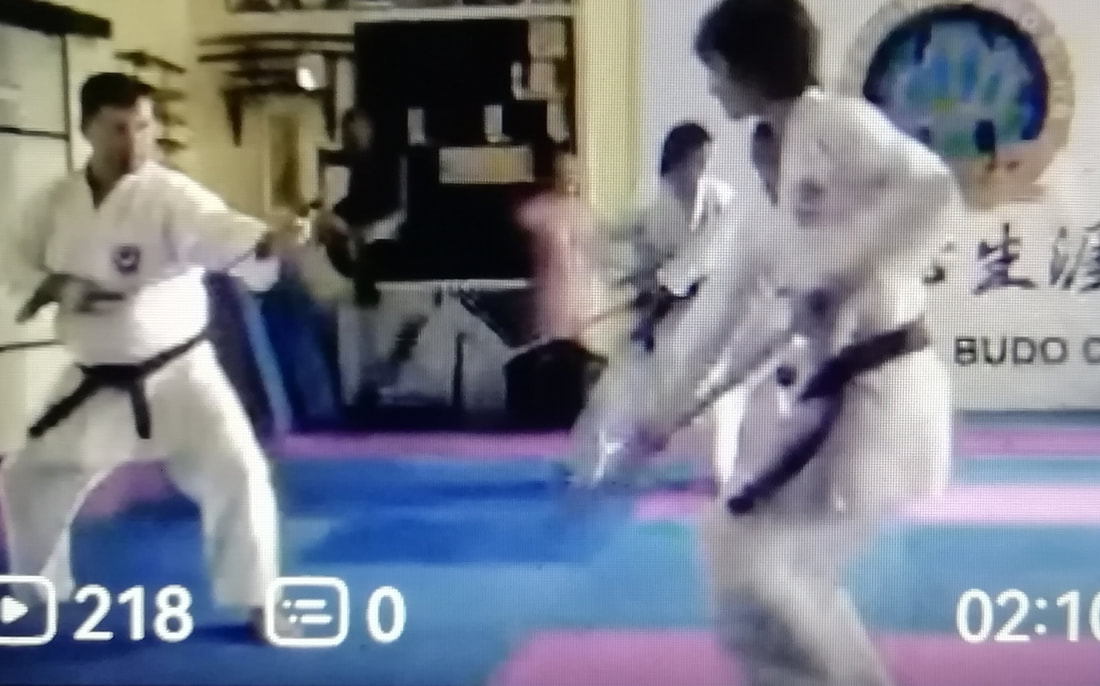
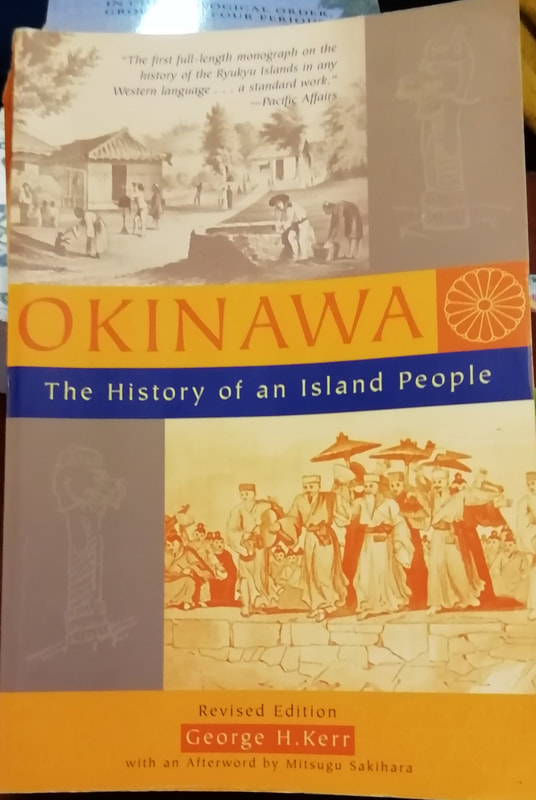
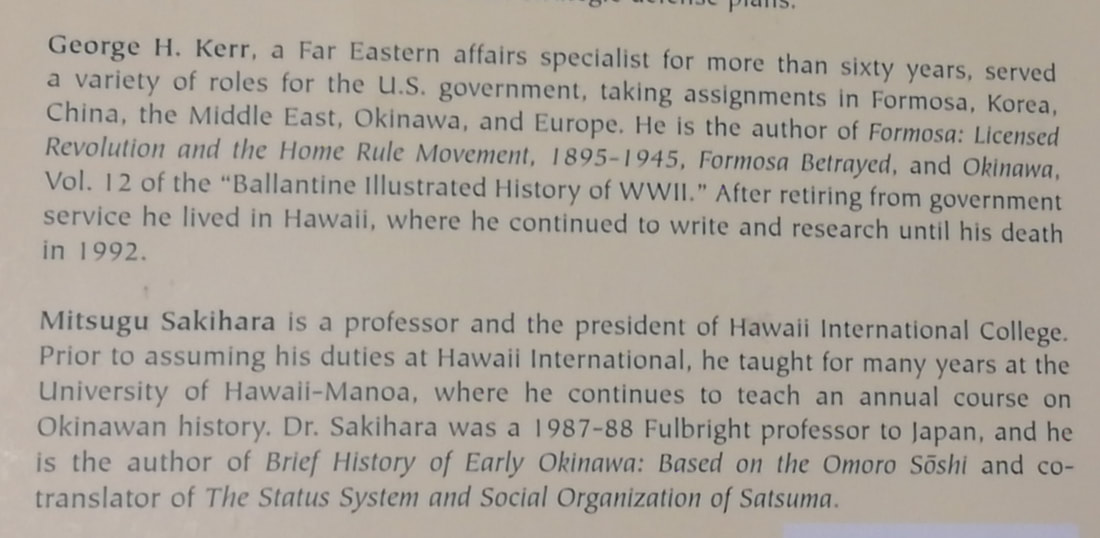
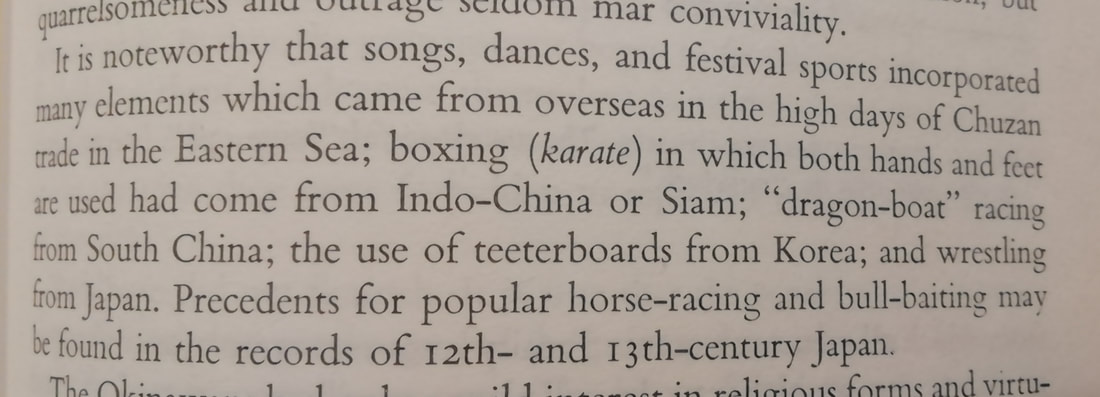
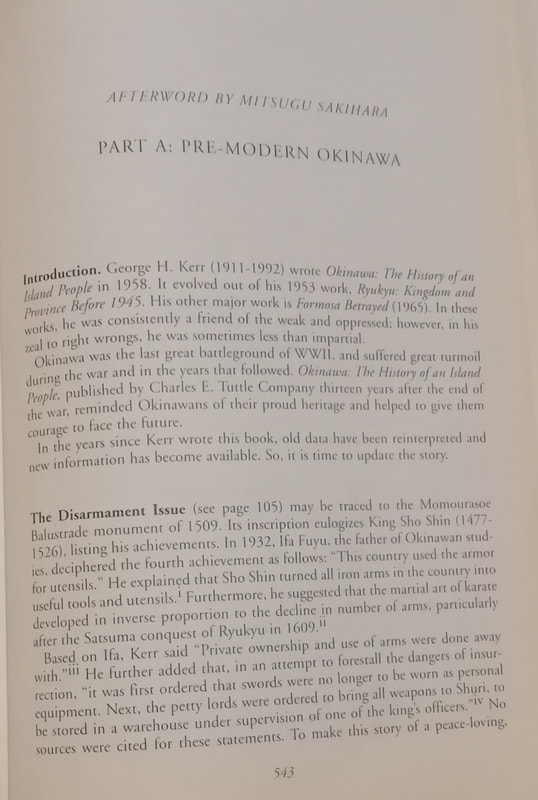
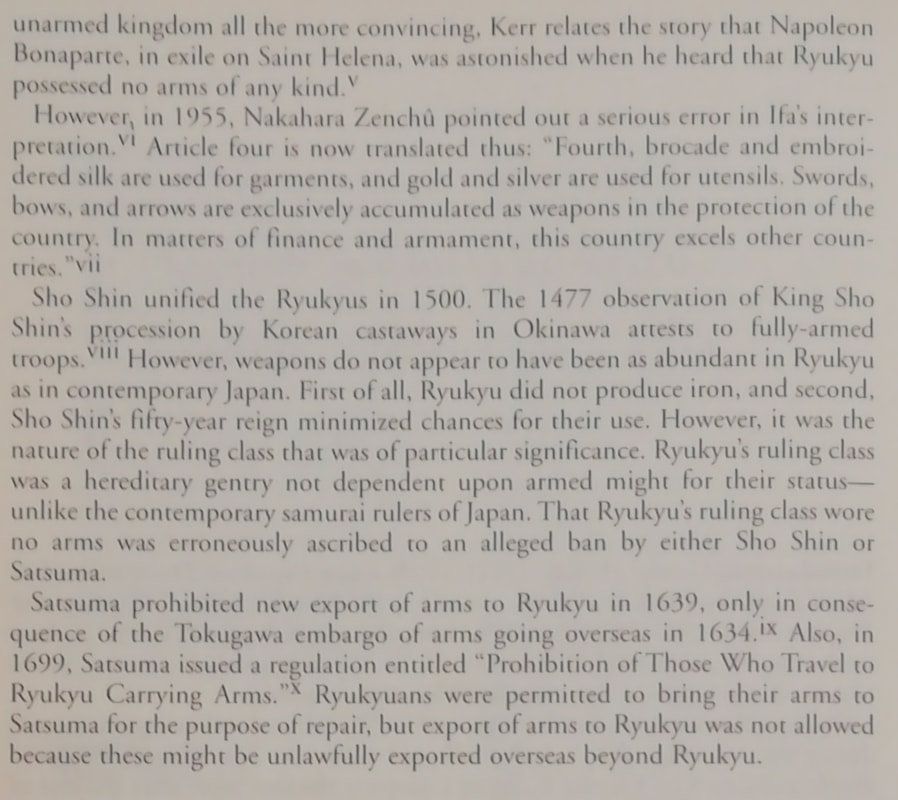
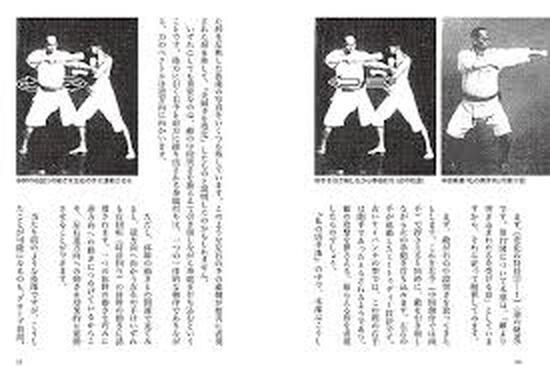
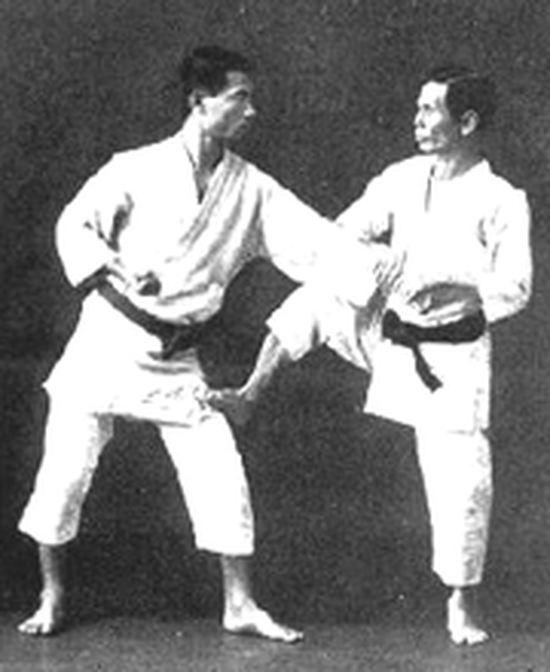
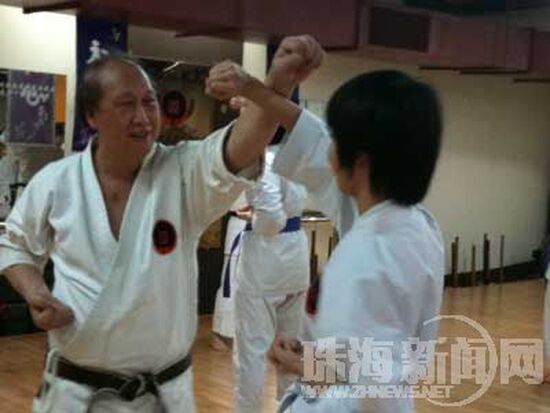
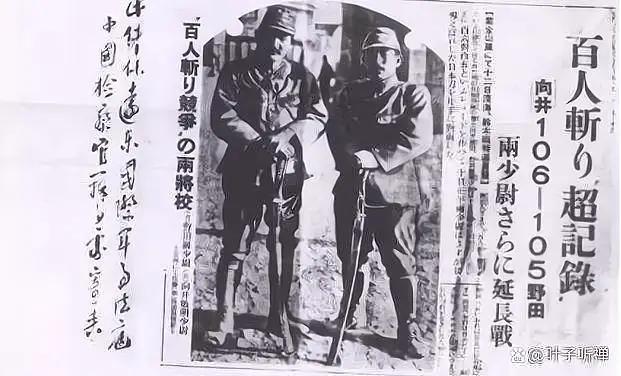
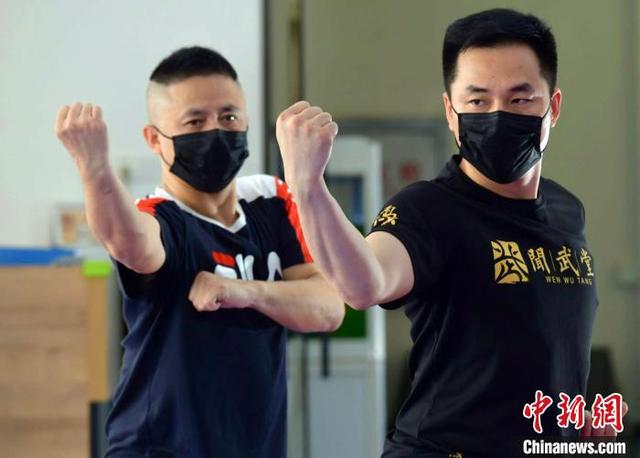
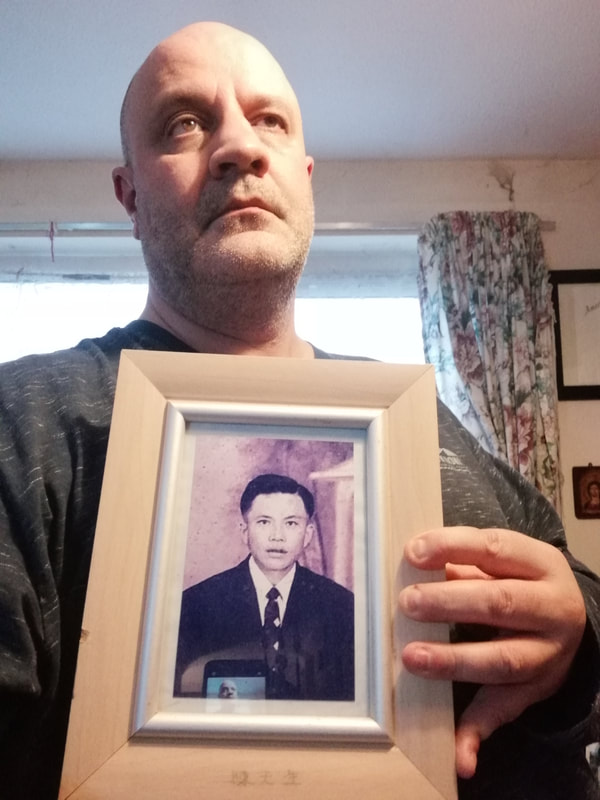
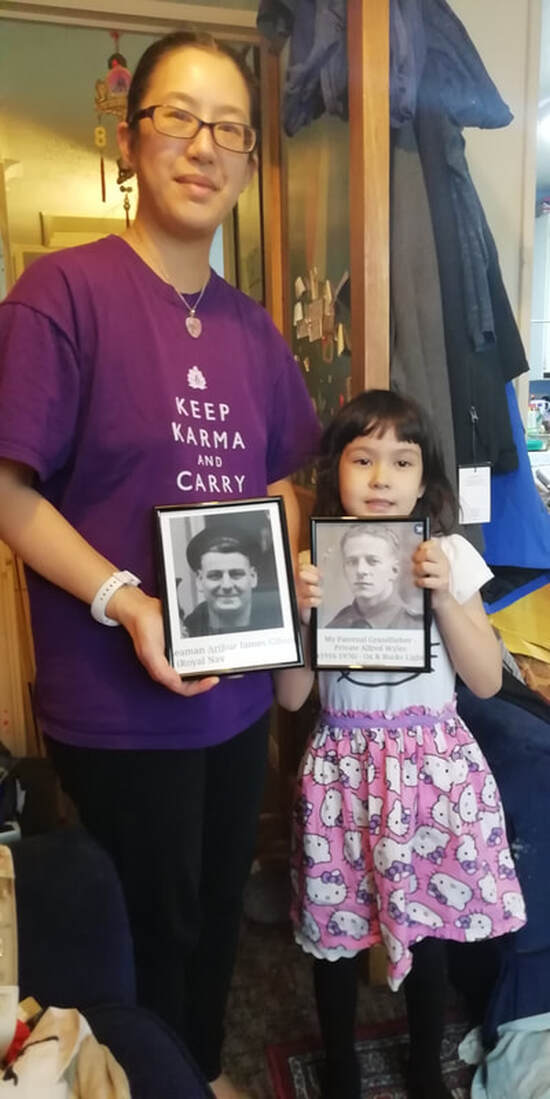
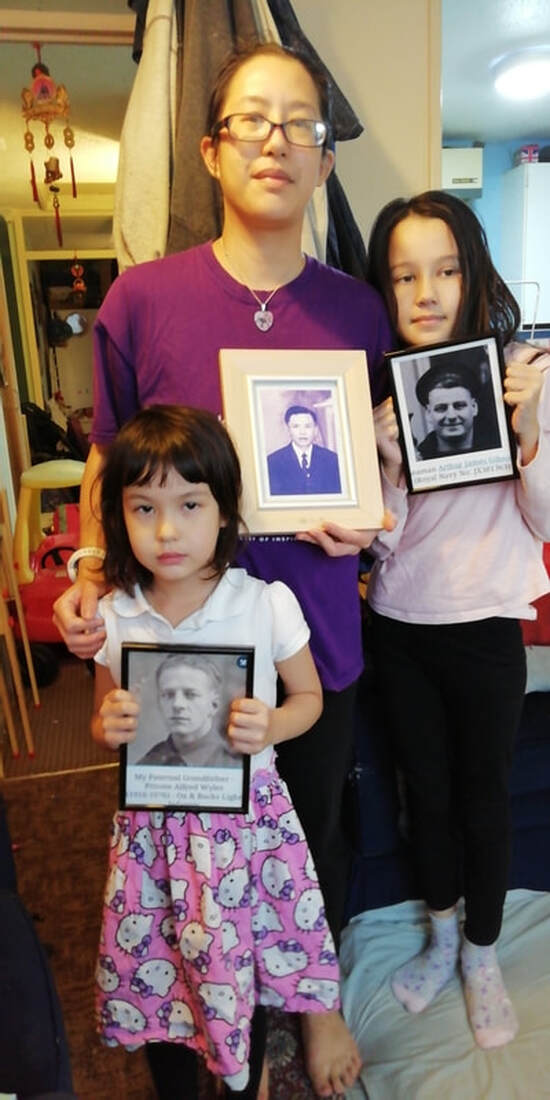
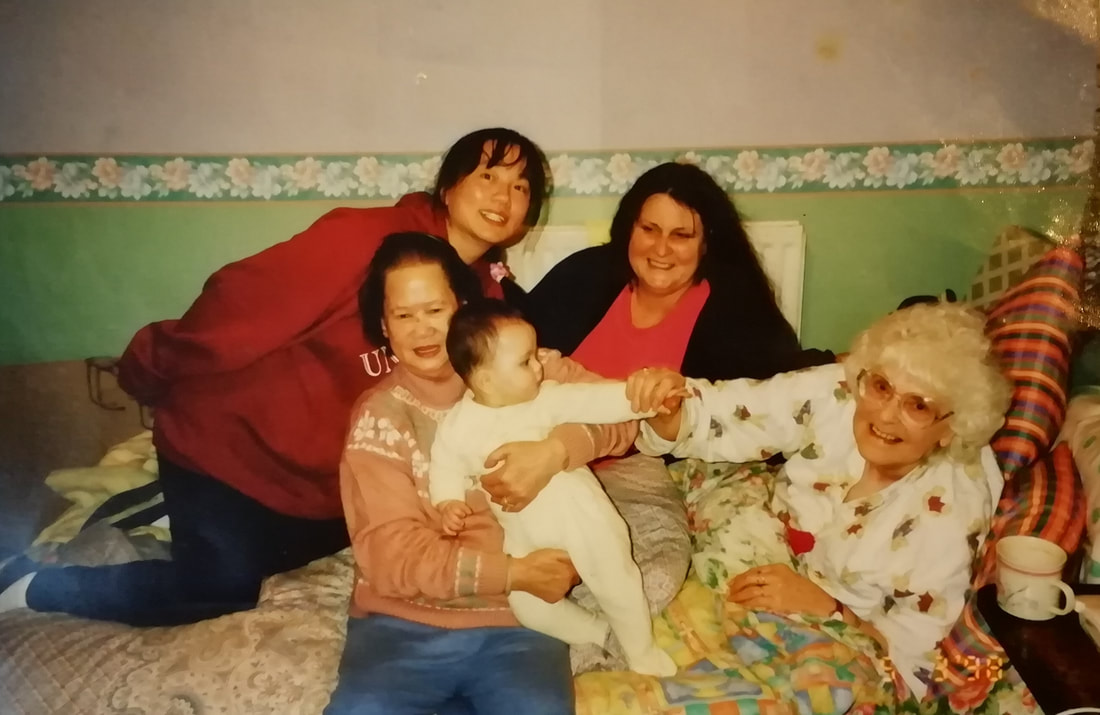
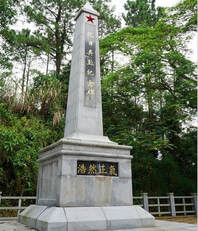
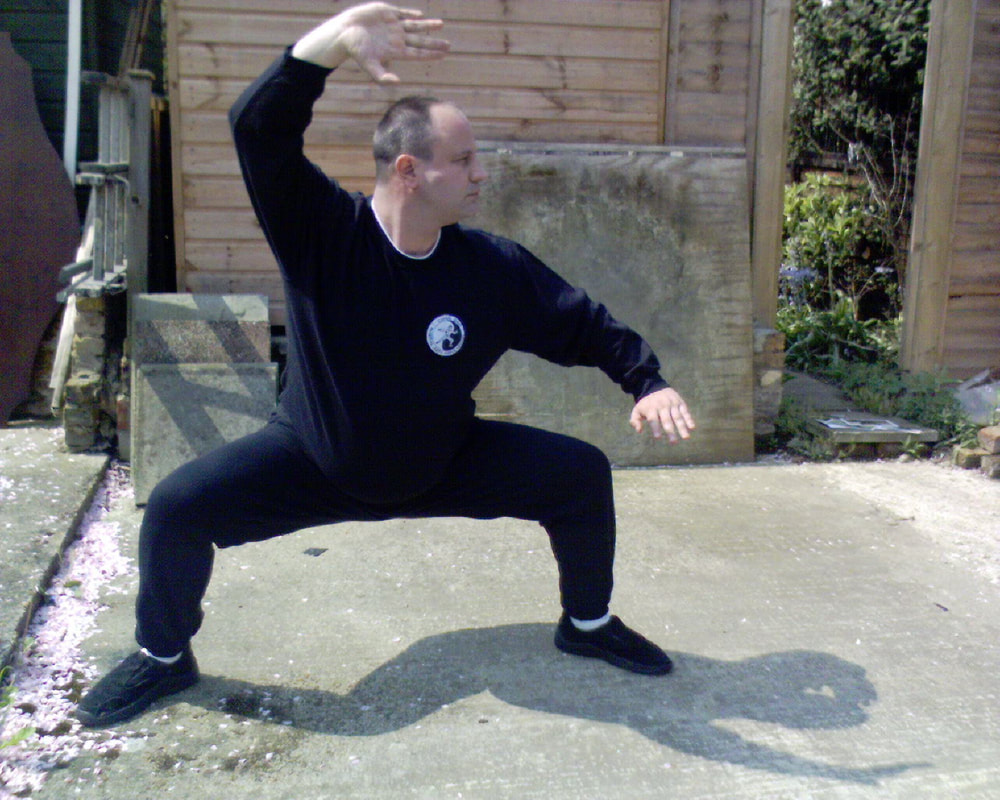
 RSS Feed
RSS Feed